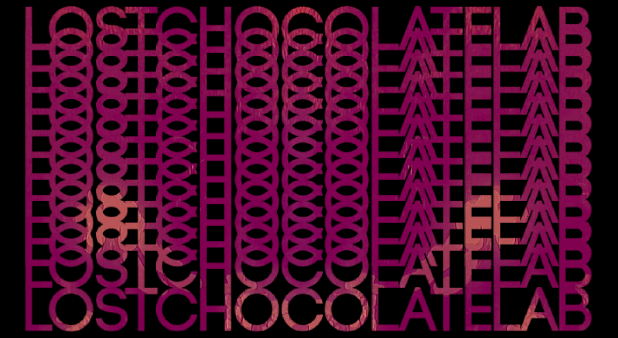This post may contain affiliate links
Part 3 of a 3 article series, discussing the evolution and iteration on the system that was used to compose Lost Landscapes and highlights some more recent effect builders and the quest for more warble.
Part 1 – Opening a Trans-Dimensional Portal Using Time-Based Effects
Part 2 – Lost Landscapes | Pedalboards & Processing
Not content to sit idly by, the pedal board that was in-place for Lost Landscapes has gone through some iteration. In game audio, swift iteration is the key to being able to deliver quality for the finished title. This same tireless mentality drives me to always be improving on the system of play when it comes to pedalboards and effects opportunities. How to bring more dynamism into the moment? What other textures need to be within reach? What am I trying to express and how can I better express it? These questions can only be answered through experimentation and by spending time working through the potentials that exist within a system. With that I’ve made some small adjustments to the pedalboard feeding the mono Silvertone amplifier and gone off the deep-end with the stereo pedalboard.
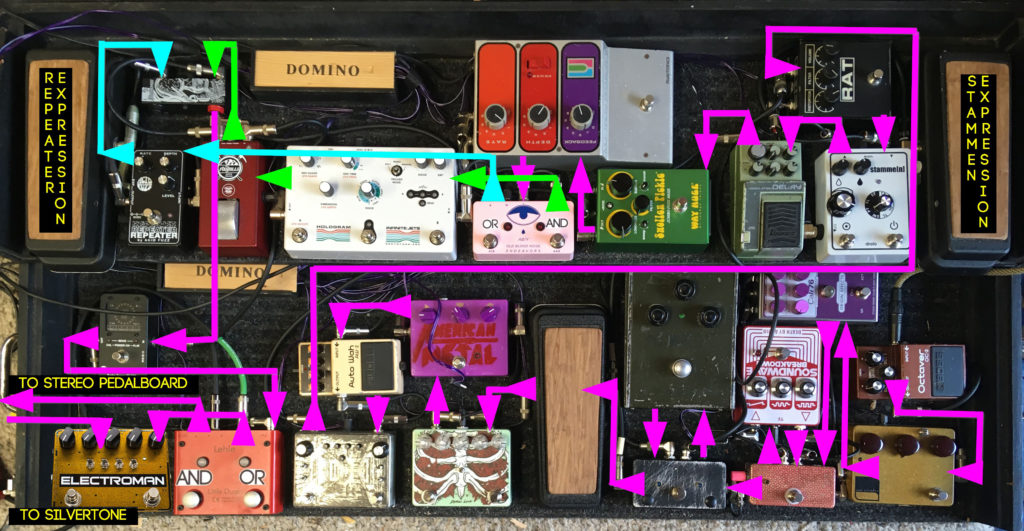
Mono Pedalboard V200
The mono board effect-order has shifted subtly; while I still start out with the Boss OC-2 Octave, I jump into the Arc Effects Klone v2 (w/ bass boost) for some of that subtle overdrive tonality that pushes things just a little into edgy-crispness. The recently added Origin Effects Cali76 Compressor brings balance and sustain in a complementary and subtle way that preserves the attack while smoothing out the signal coming from the guitar From there, the Death By Audio Soundwave Breakdown is added into the chain in conjunction with a custom True Bypass Clean Blend Effects Loop I built using a Mask Audio Electronics Utility Blender circuit board at the heart. The clean bend gives the ability to preserve part of the original tone being passed while blending in the mind-bending unhinged fuzz squelches coming from the Soundwave Breakdown. I also built another simple True Bypass Effects Loop (Recognize the enclosure from the One Loop Effects Loop in Part 2?) for the Green Russian Big Muff next in the signal path to avoid some of the legendary “tone suck” that is a symptom of the vintage circuit.
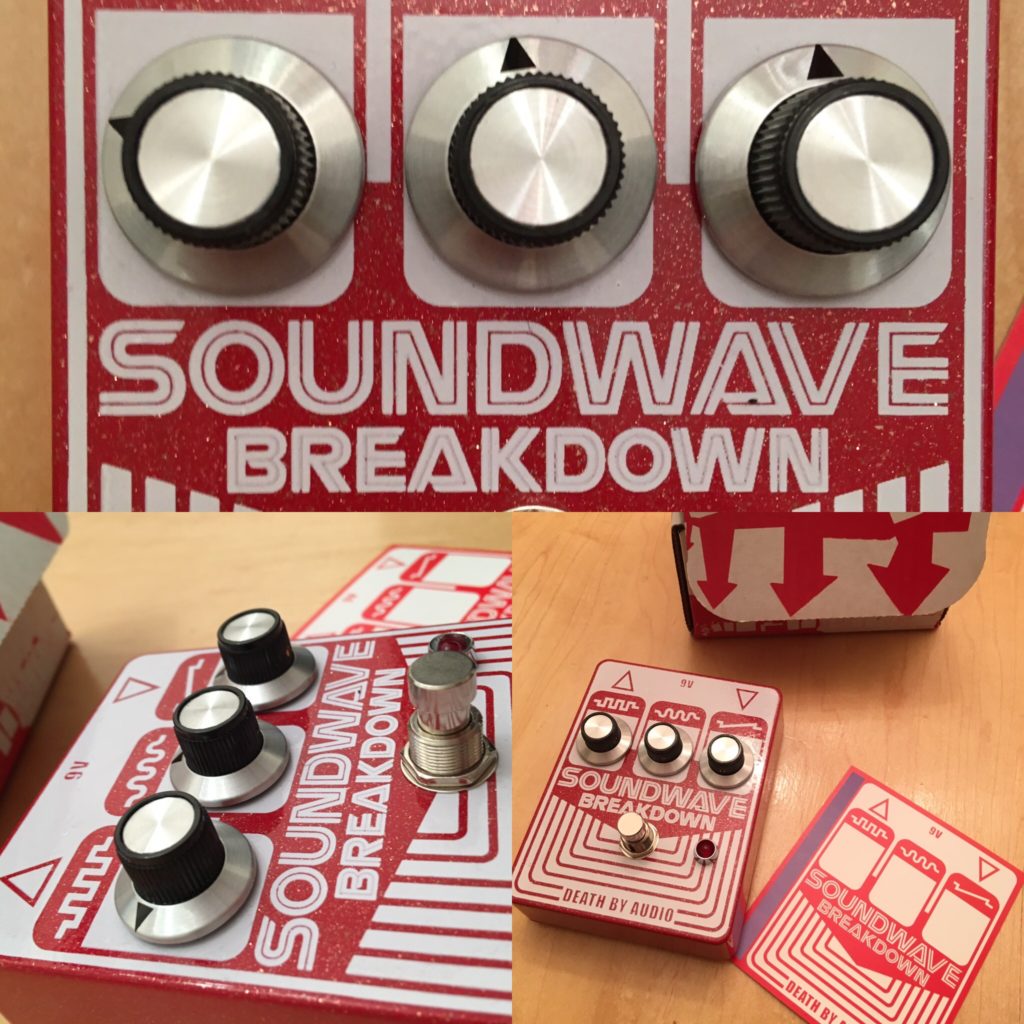
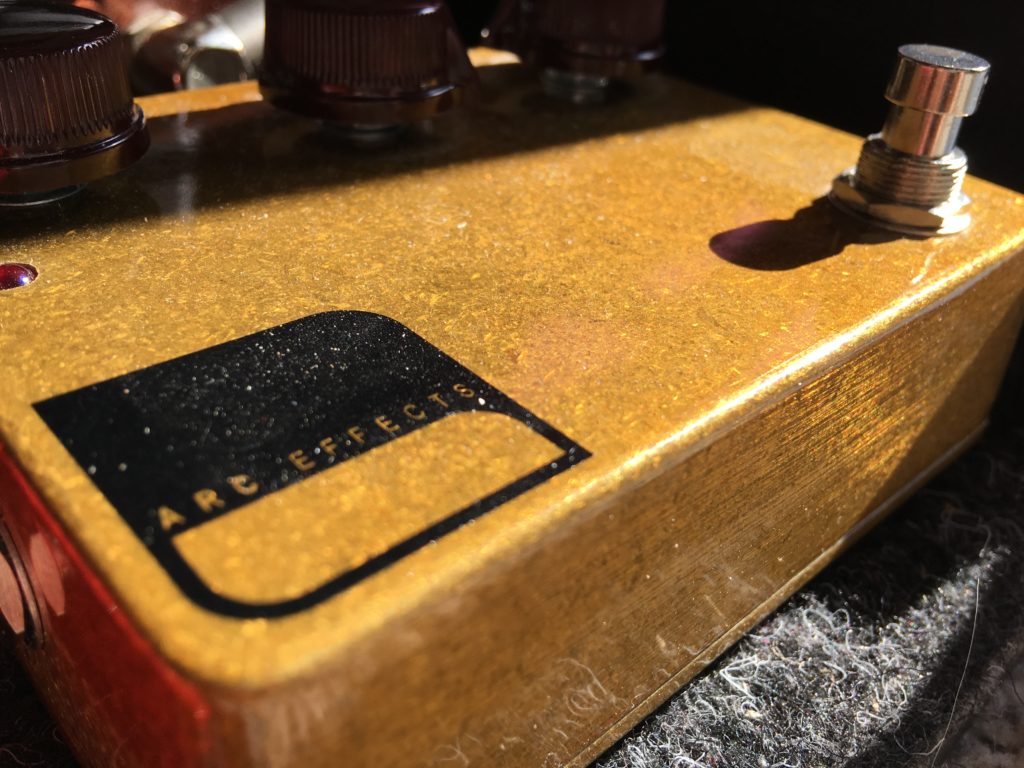
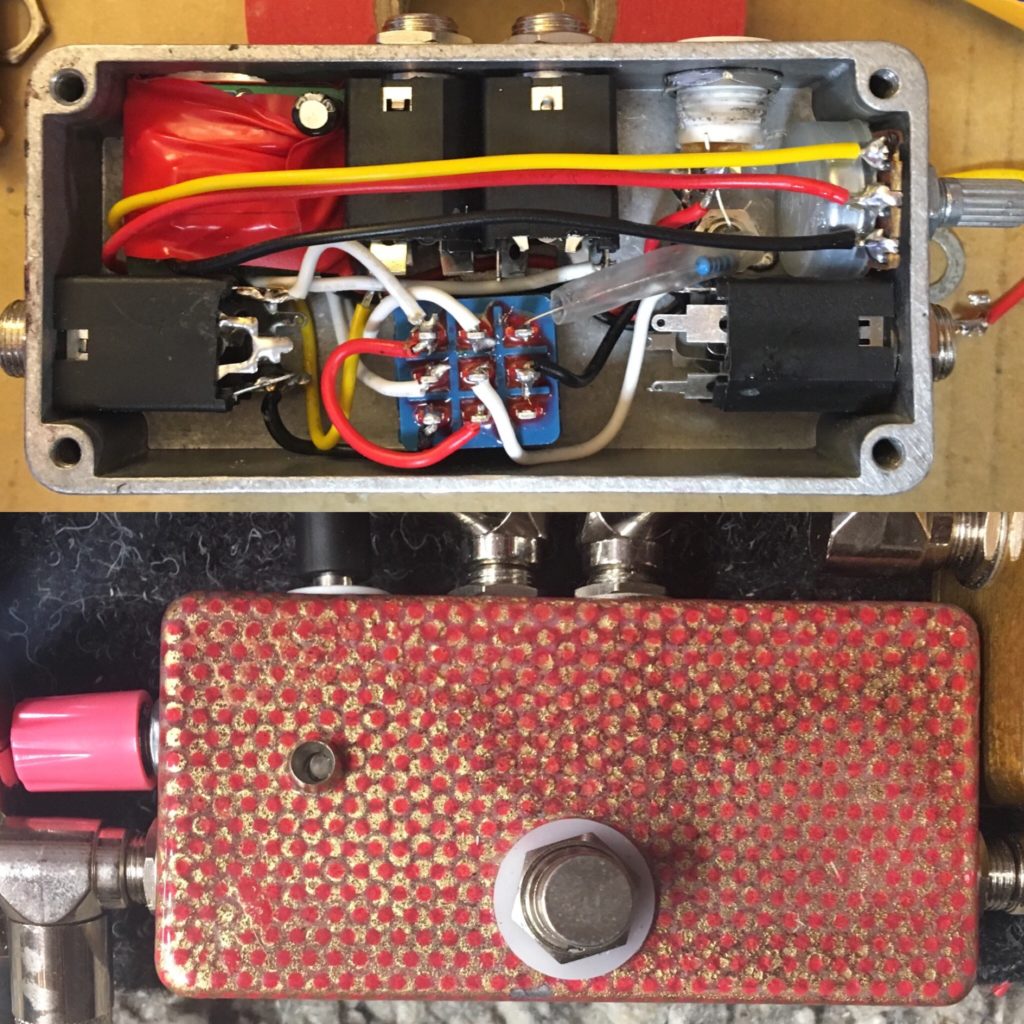
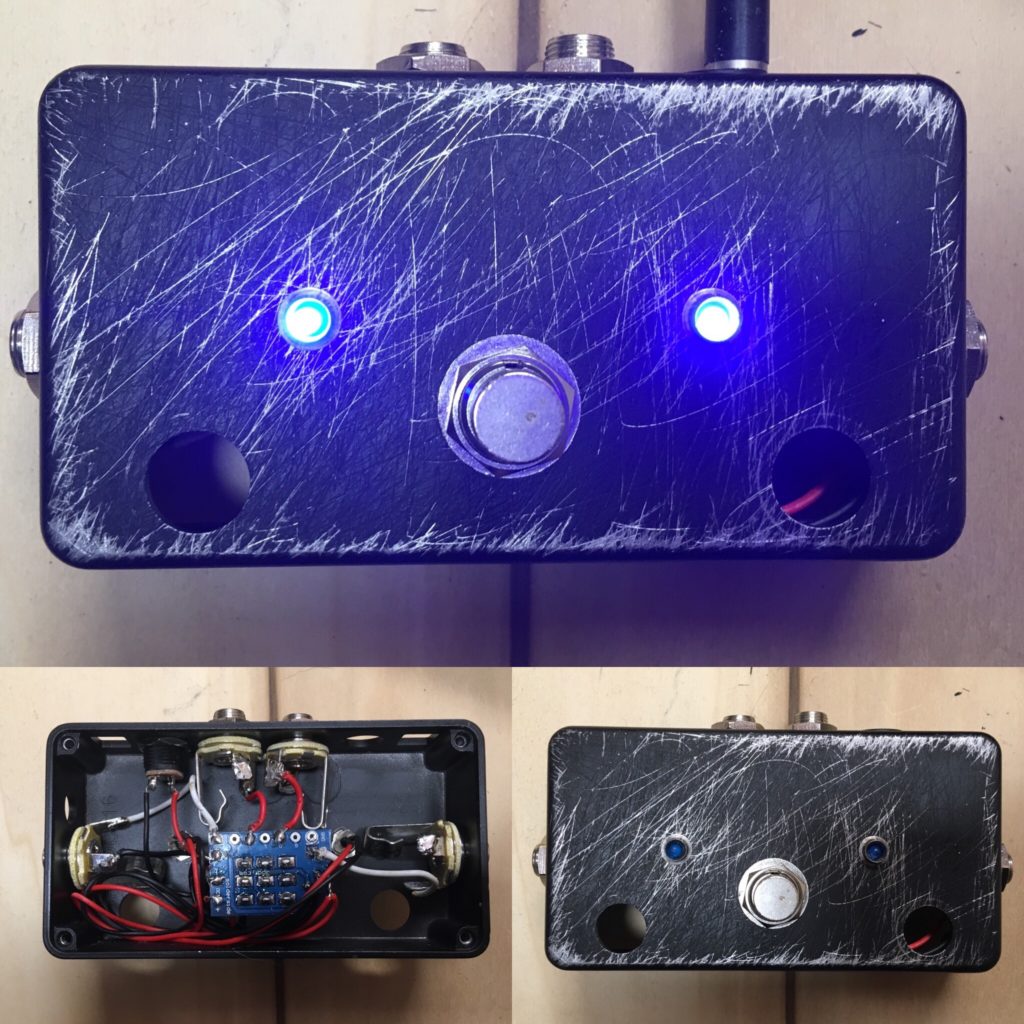
With the Dunlop Jimi Hendrix Wah occupying the same place after the Big Muff, I decided to augment the previous heavy-dirt section with the addition of an Abominable Electronics Demon Lung. The Demon Lung is an iteration on the Boss FZ-5 Fuzz pedal and contains two foot-switchable fuzzes that go from hoarse and wheezy to full-on metal. Like the Soundwave Breakdown it has the ability to get sputtery and nasty, while smoothing-out for some solid full-frequency lift-off. As if that wasn’t enough, the rehoused and customized DOD American Metal is still firmly in-place and can still pull all of the air out of the room with its deafening low frequencies.
Digging out of the dirt section, the signal dives back into the Boss AW-2 Auto Wah and then finds itself knee-deep in the Ezhi & Aka Tape T Dual Tremolo/ Pitch Detuning/ Disaster Box. The Tape T is a weirdly beautiful effect that can handle simple or overlapping vibratos all the way to tape-machine-on-fire detuned chaos. With little in the way of documentation, this is a pedal and interface to feel your way through toward nirvana, but once arrive you’ll never want to leave it.
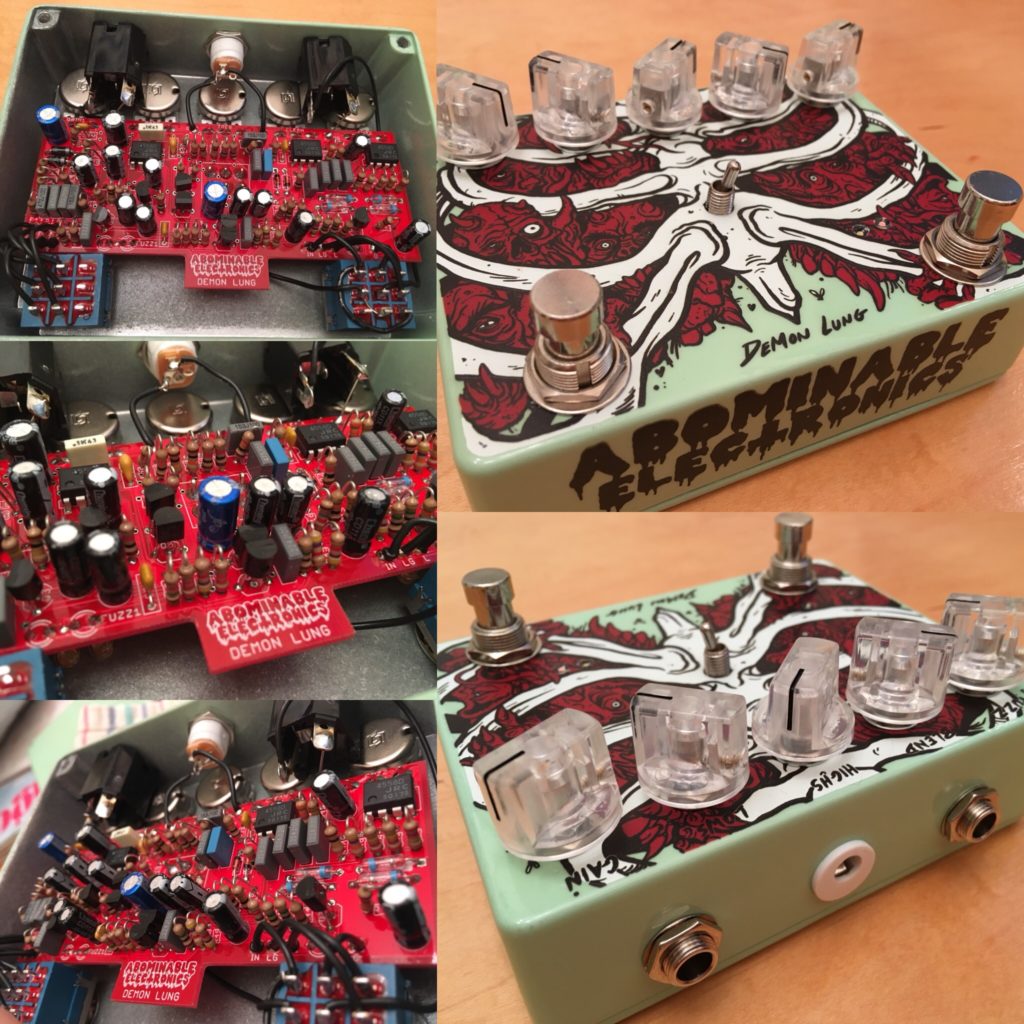
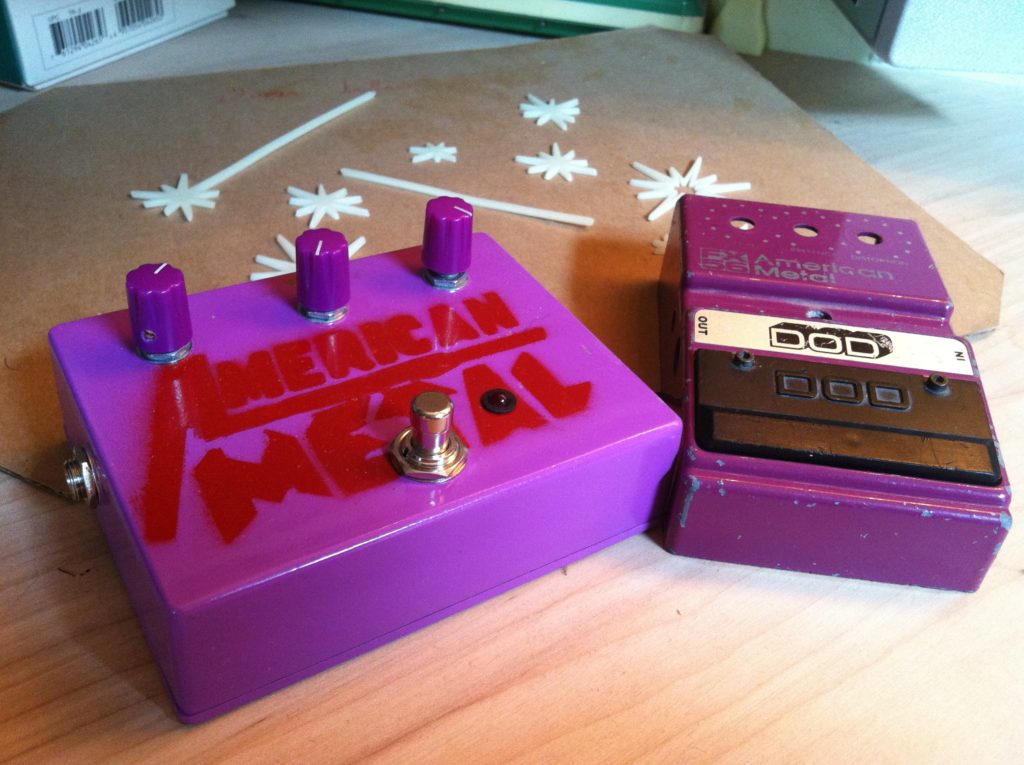
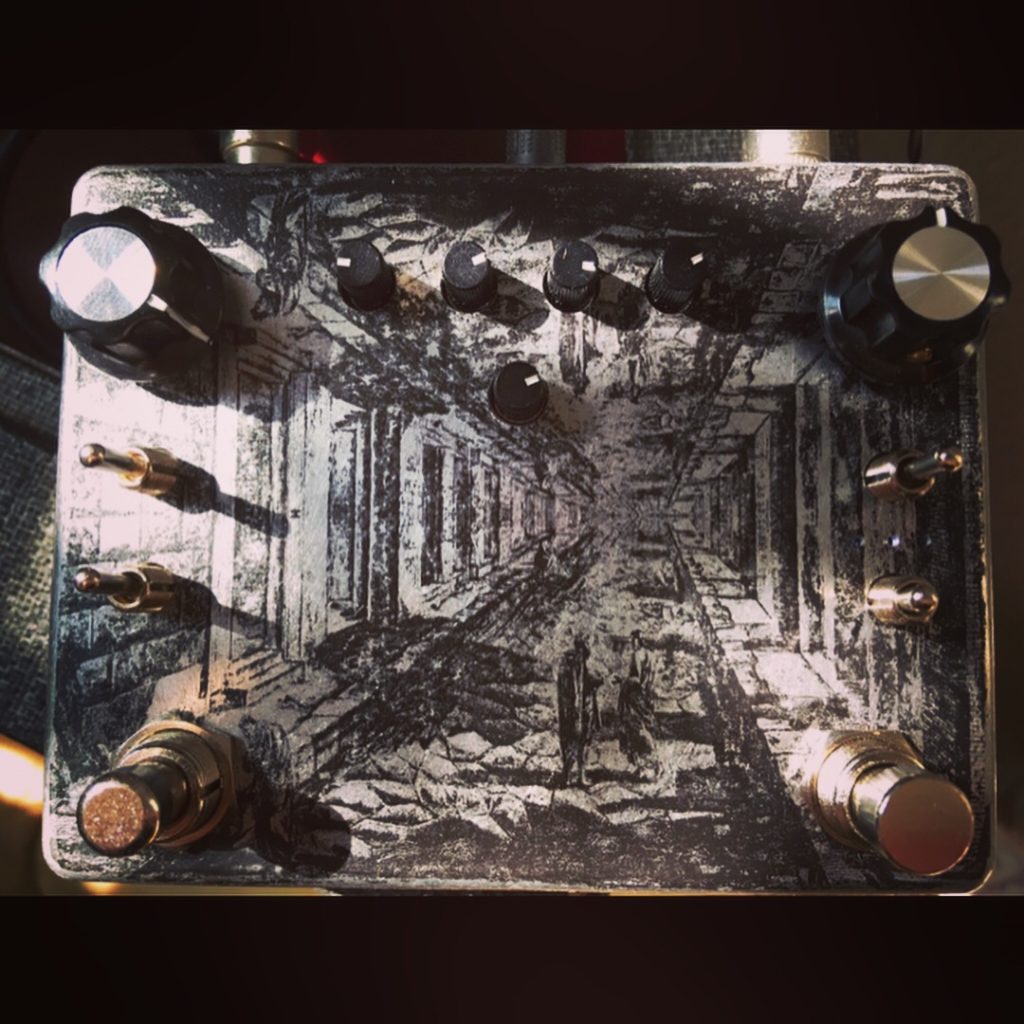
The signal jumps up to the top deck from here and straight into a ProCo Rat that brings a sharp edged bite that can cut through the fog of any ambient setting. Next it’s the Drolo Stamme[n], a collaboration with seminal ambient noise wizard Kent Sommer, wired up to a modified Dunlop Crybaby GCB-95 acting as a reverse-throw expression pedal. The Stamme[n] has tap-dancing performance in-mind and can be leveraged towards insane glitchy-ness or sustained pads of ethereal beauty. The expression pedal gives realtime control over timing or pitch aspects of the sampled signal and is used to great effect on a future releases.
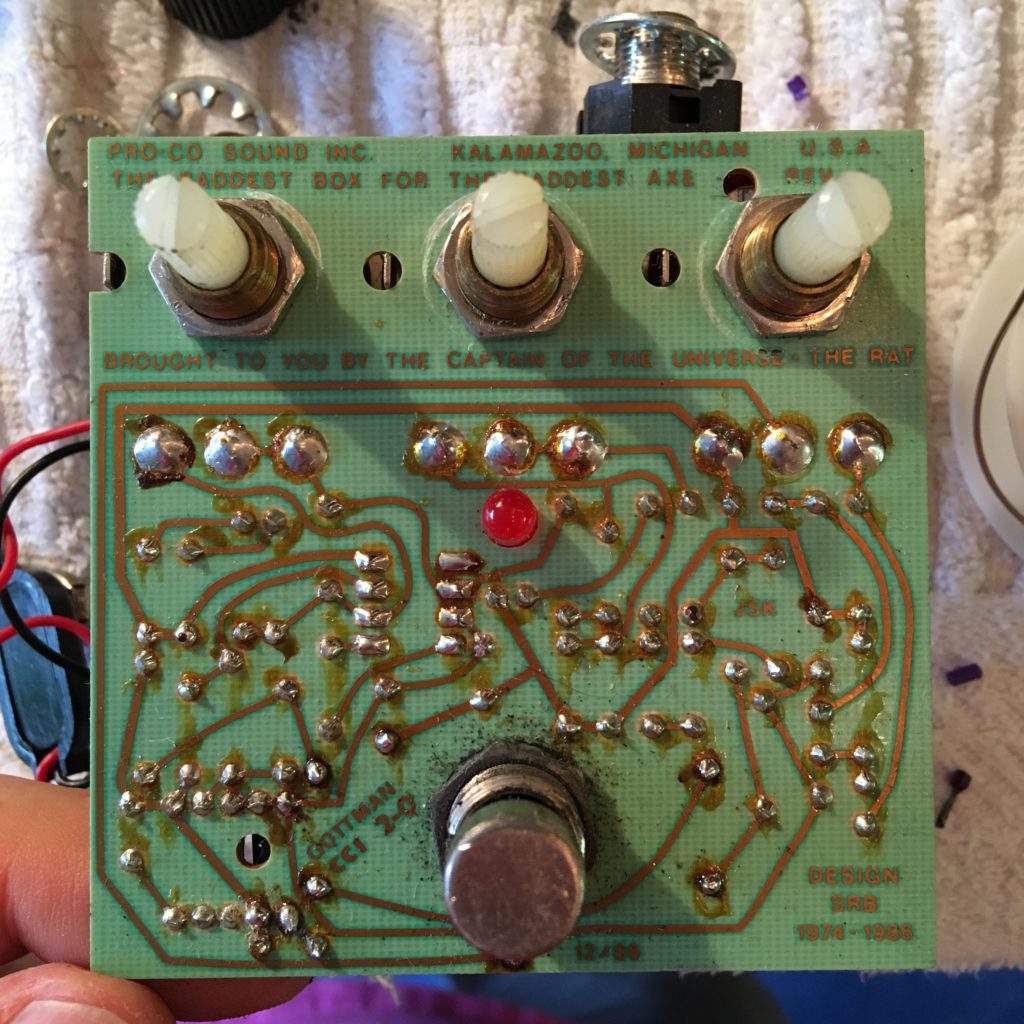
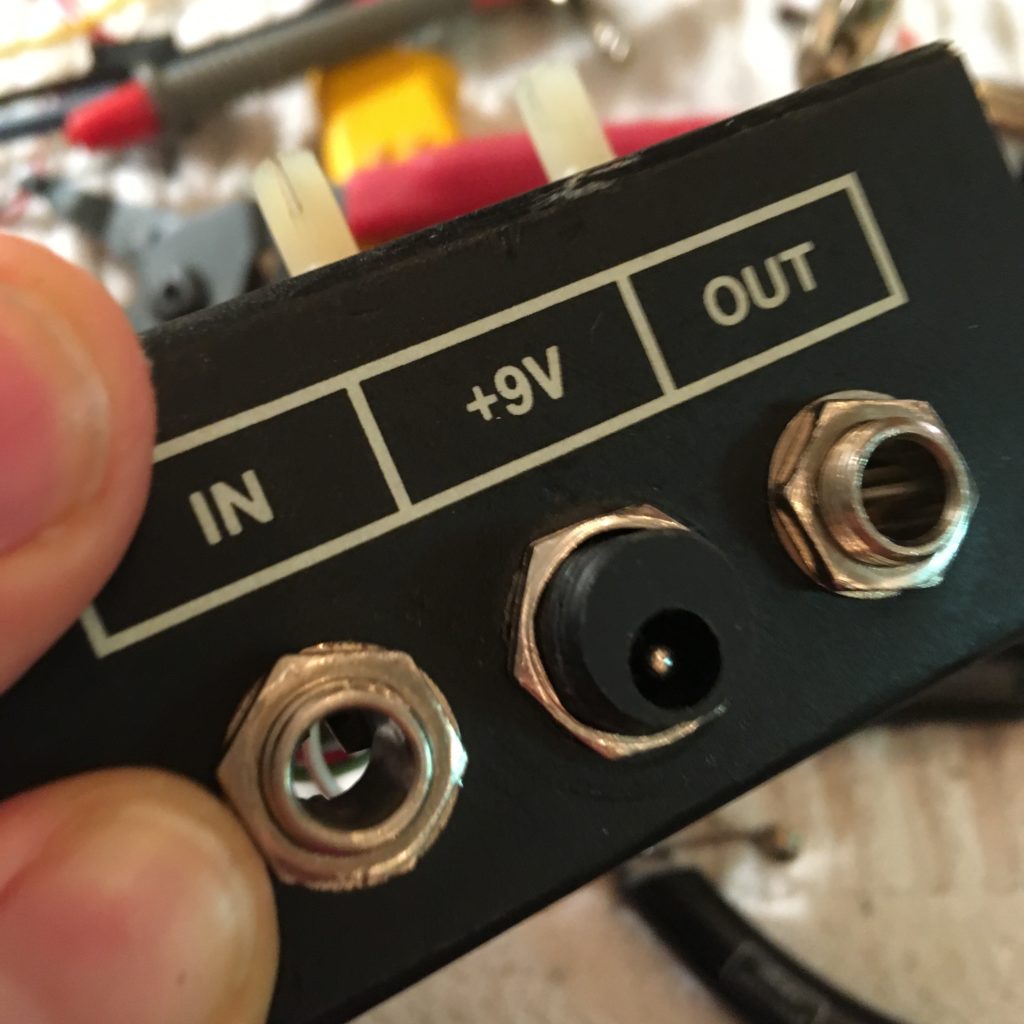
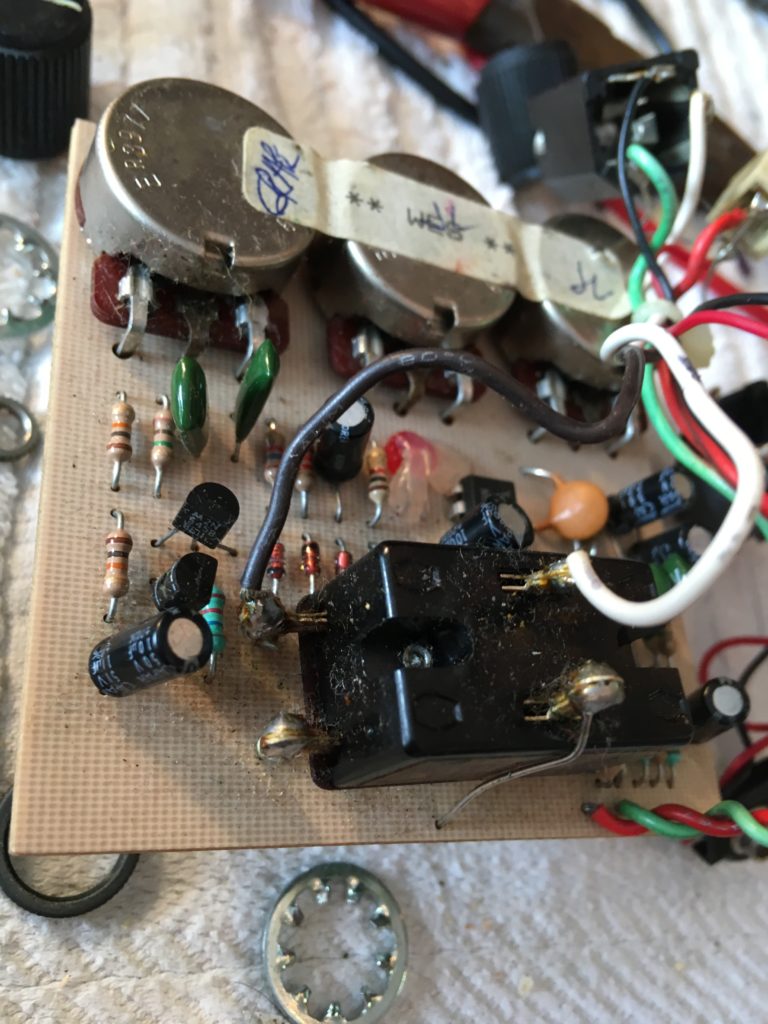
![Drolo Stamme[n] pedal](http://www.pedalhaven.com/wp-content/uploads/2018/09/IMG_6905-e1536516507798-768x1024.jpg)
The trusty Ibanez DML, Mu-tron Phasor II, and Way Huge Swollen Pickle lead to an Old Blood Noise Endeavours ABY box that branches the signal into two paths. One path leads to the Acid Fuzz Repeater, which is an iteration of the Vox Effects Repeat Percussion found onboard the Vox Starscream, and can be summed up as the sound of the famous Spacemen 3 tremolo effect in a box. With it wired up to another modified Dunlop Crybaby Expression Pedals that is used to control the speed of the tremolo, it puts dynamic control of the Repeaters time-bending ebb-and-flow at my feet.
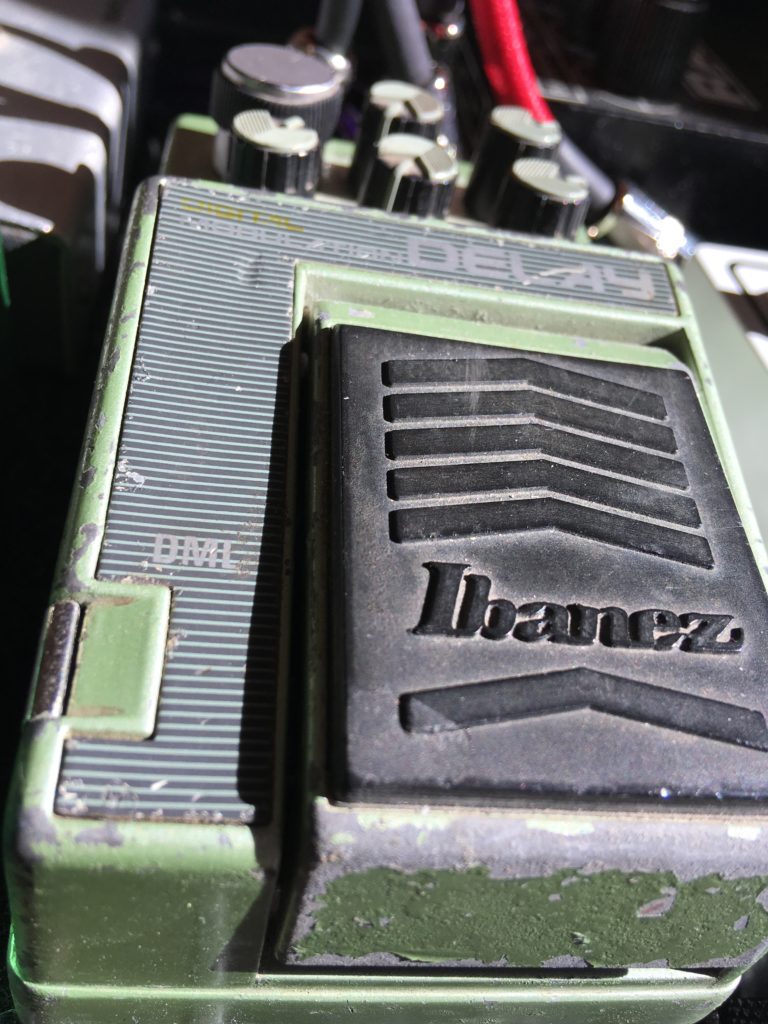
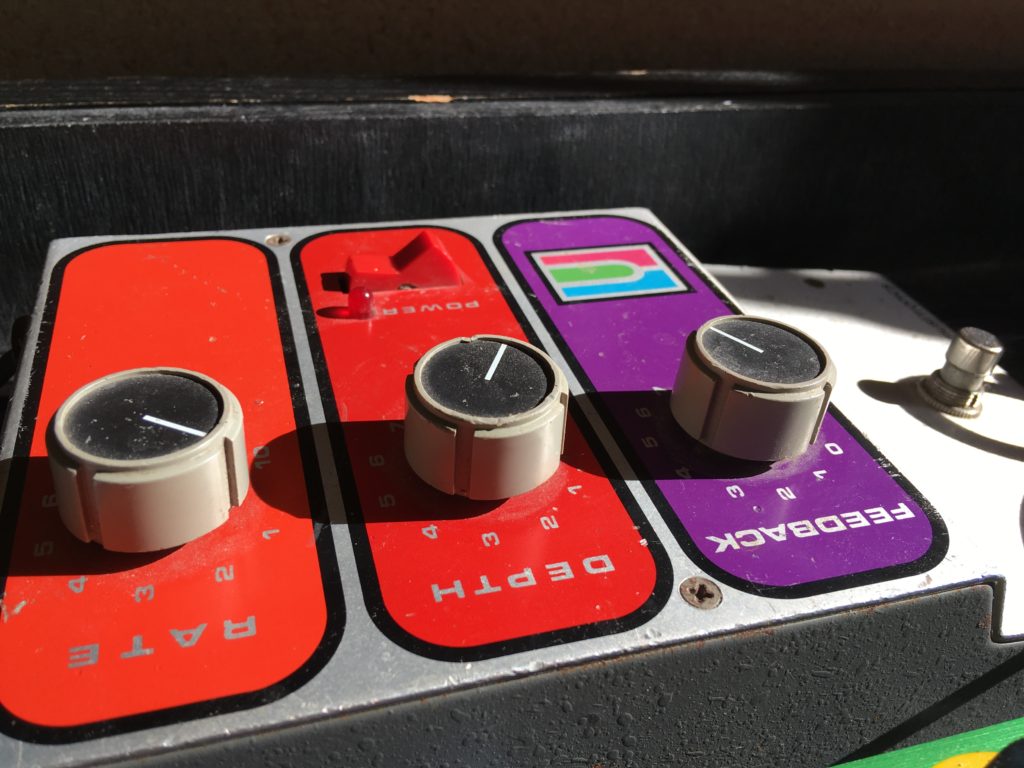
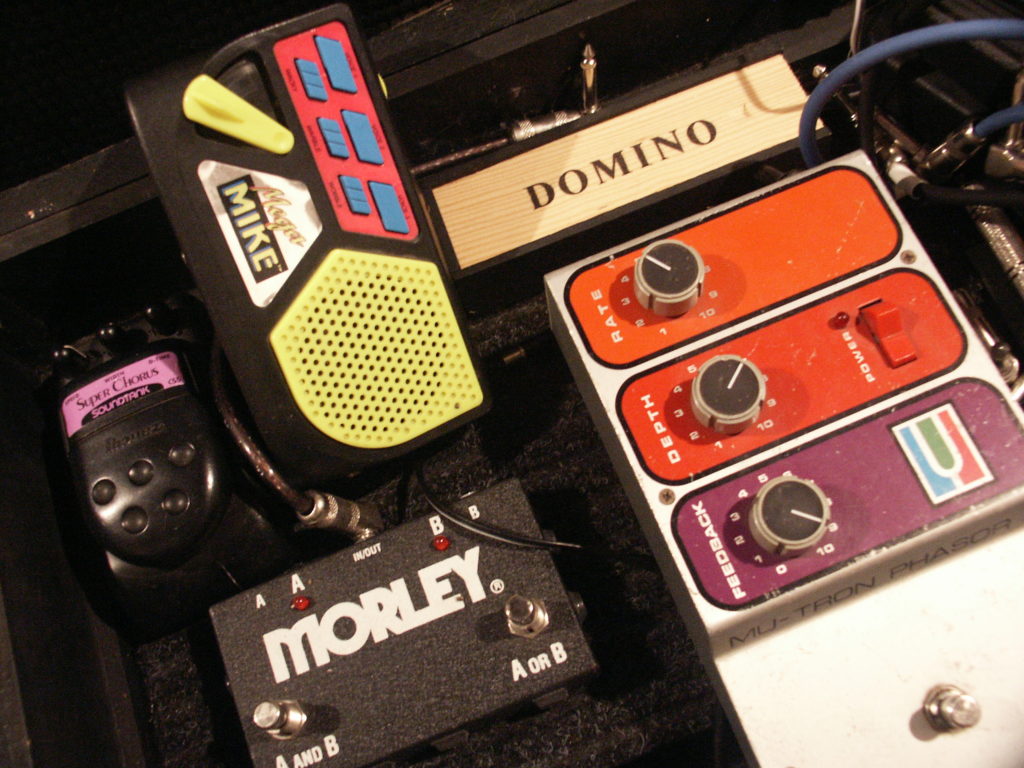
The other path from the OBNE ABY goes into the Hologram Electronics Infinite Jets Resynthesizer. Not just a witty play on words name-checking the famous novel by David Foster Wallace, the Infinite Jets has more than a few footnotes in its crazy-making appendix. The first being: an amplitude sensitivity threshold, where sound played into the effect will be captured and looped depending on the pick-attack intensity. This allows playing style to heavily influence how the effect reacts and brings a fresh playfulness to interacting with the pedalboard. Want it to grab a chunk of what’s playing? Pick softer. Need to play through a quiet passage without effect? Alter your pick-attack. The Infinite Jets has become my stutter box of choice due to its ability to randomize the stutter speed each time the threshold is reached; it grabs a chunk of the signal and repeats it at a steady rate until the threshold is broken again and then a new rate is chosen for the new sample. While this is just one of the presets in the box, it’s by-far my favorite and adds a stuck-on-repeat temporal confusion to things that vibrates molecules in a magical way.
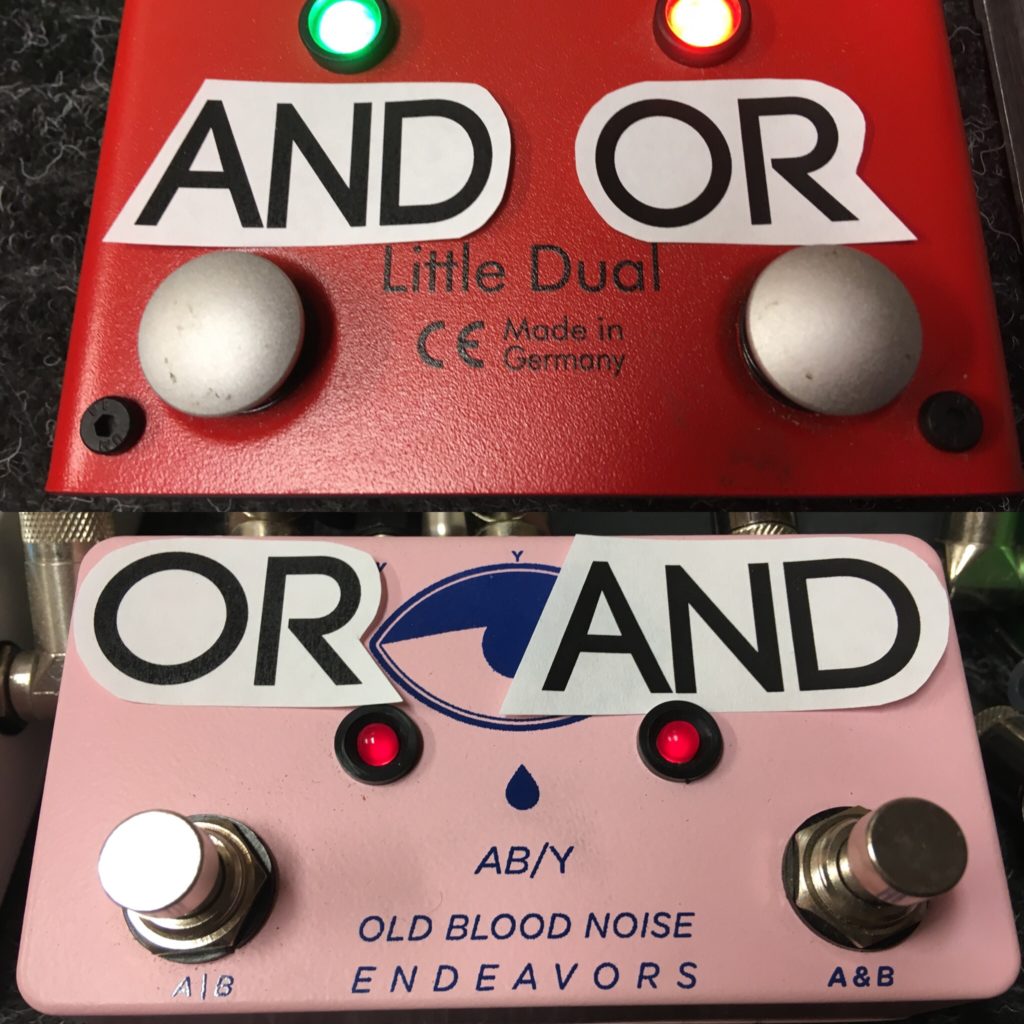
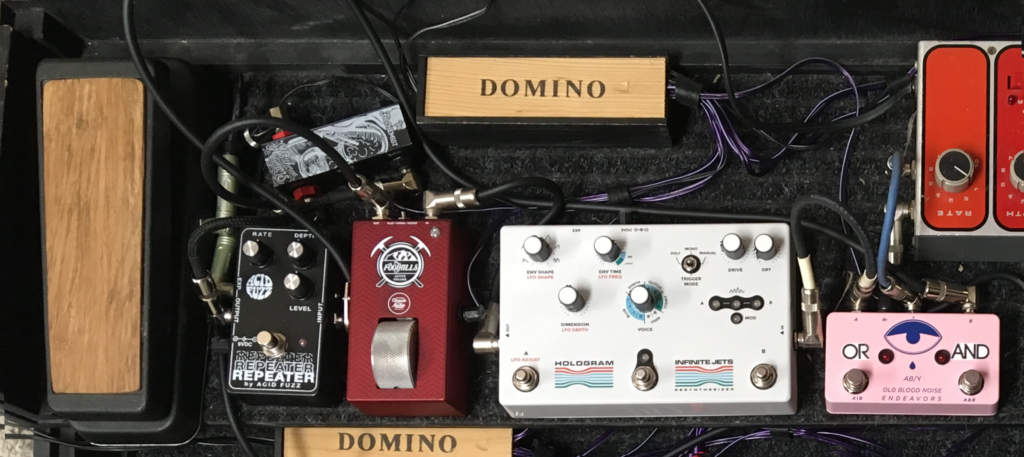
The Infinite Jets runs into a Classic Audio Effects Foothills Active Volume giving the ability to control the volume balance between the A & B branches of the OBNE ABY; the mix of the Infinite Jets in relation to the Acid Fuzz Repeater. The signals of these two are recombined using the Matthews Effects Alchemist Transmutation Box, which sums things back into a mono signal routed into the Lehle Little Dual Amp Switcher. The Little Dual is another signal splitter that is made for splitting the signal between two amps and is (almost) the final exit point for the mono pedalboard signal. One channel jumps from the mono pedalboard to the input of the stereo pedalboard, the other now flows into the Solid Gold FX Electroman Mk II delay (instead of the Line 6 DL4) before landing at the input of the Silvertone 1484. The Electroman is a “simple” delay pedal w/ self oscillation that carries some great features for modifying the signal including: different ramp times for oscillation, modulation, and “trails” mode. (If you haven’t heard of the aforementioned trails mode, it’s the ability for a delay/ Reverb pedal to continue playing the processed sound after the bypass switch has been pressed allowing the “trails” to finish playing.
This final effect stage can be added to the signal headed only to the mono amplifier allowing for delay that doesn’t get passed to the stereo pedalboard. The Ultimately, the mono pedalboard and amplifier maintains definition of the guitar signal free from heavy reverberation and time-based effects, which are handled quite well on the stereo-side of the equation.
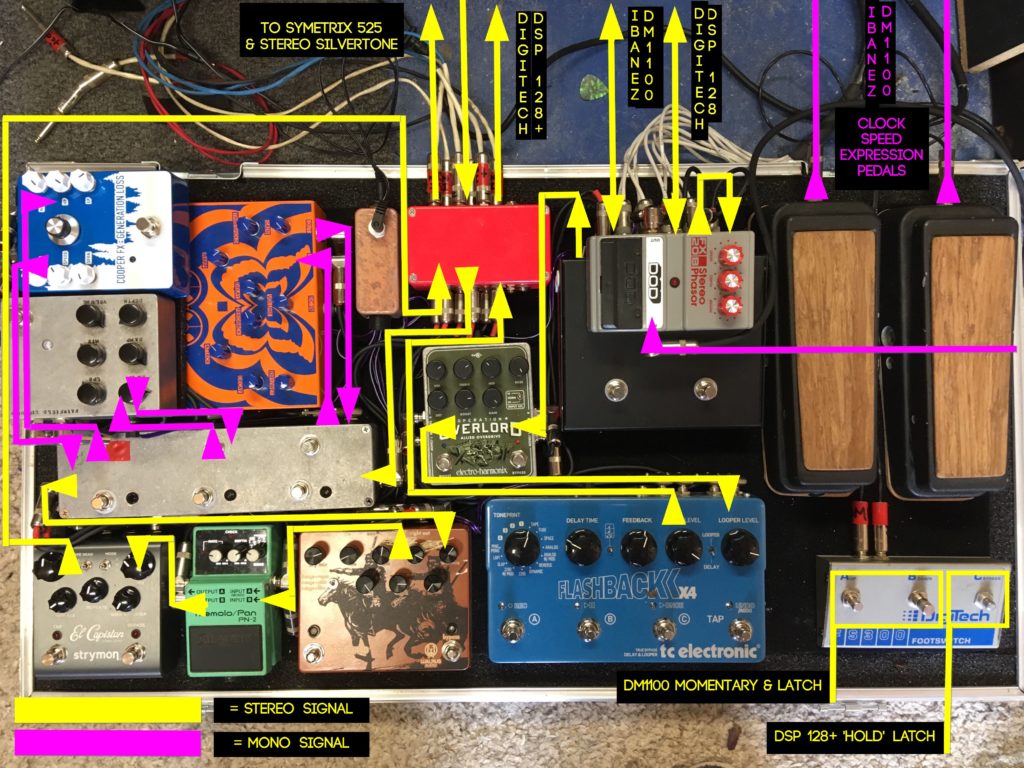
Stereo Pedalboard v2000
A keen eye will notice that the Boss CH-1 Super Chorus has been removed and swapped in for a DOD FX20B Stereo Phasor to handle double-duty; serving as both stereo phasor and to expand the mono signal to the stereo input of the Custom Dual Stereo Effects Loop. From this point all signals are running in stereo through to the final output and amplifiers. The Dual Stereo Effects Loop allows for the leveraging of rack-mount processors, with each loop headed independently to either the Digitech DSP128 or Ibanez DM1100’s (Outlined in Part 2).
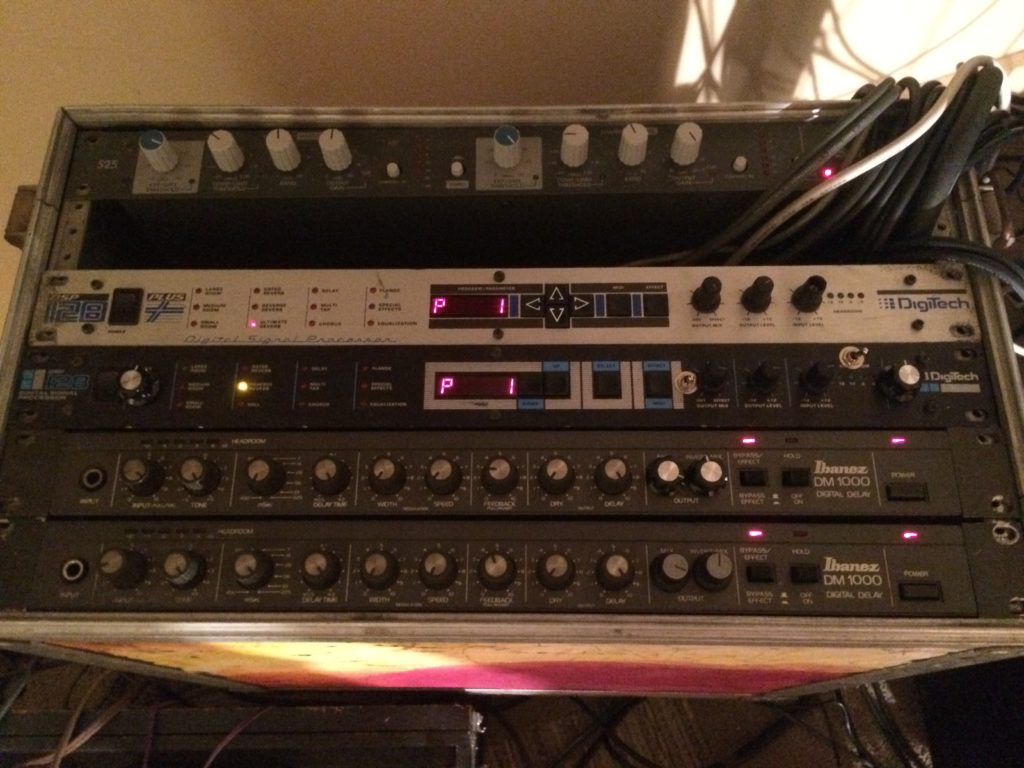
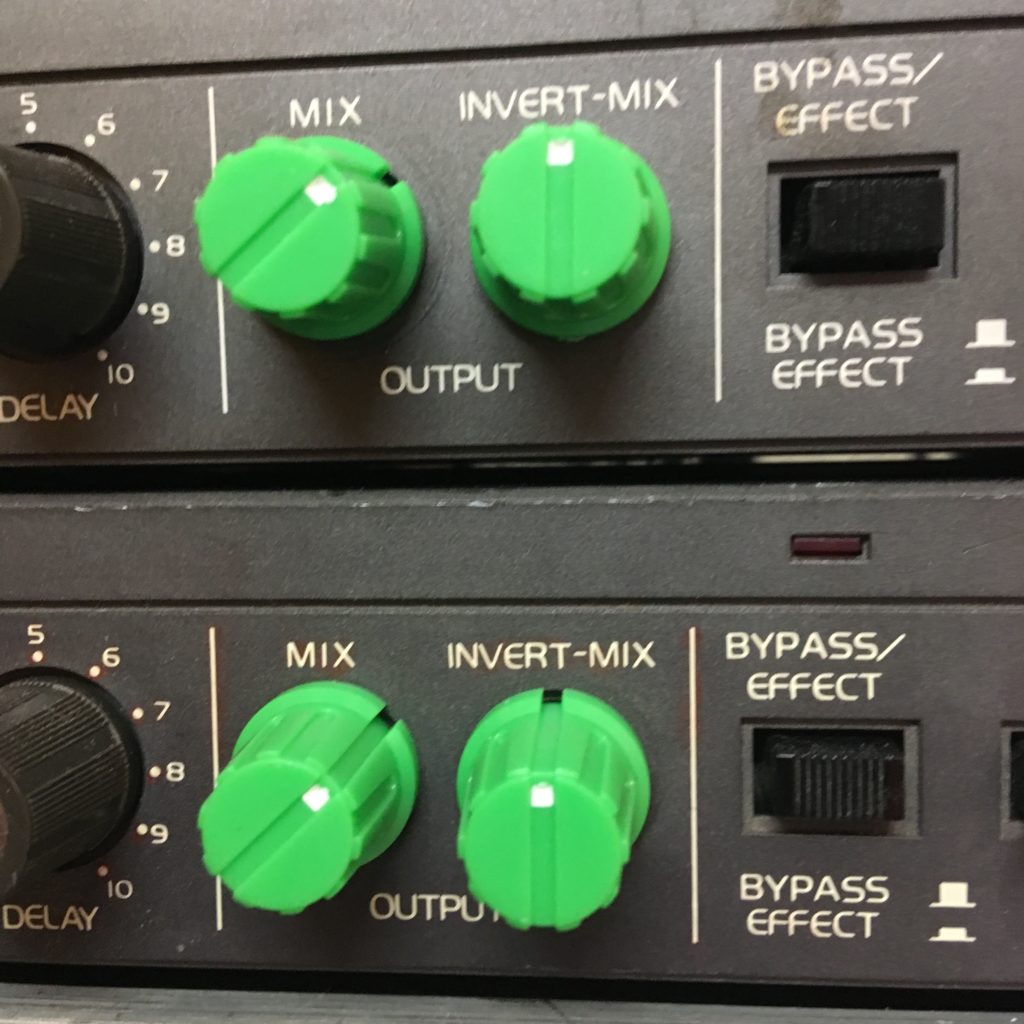
From there, the stereo signal then makes its way to the Electro Harmonix Overlord Stereo Overdrive. I wanted the ability to apply some distortion to the stereo signal only and the Overlord brings just enough squelch to make things interesting. With the potential for stereo distortion sorted things start to get weird with the TC Electronic FlashbackX4. I usually run the FlashbackX4 with some potential for reverse time manipulation and/ or long delays. While all-eyes are on the Red Panda Tensor as a future replacement for the reverse functionality, the FlashbackX4 handles the job pretty well right now. Signal goes out of the FlashbackX4 for a trip through the Digitech DSP128+ (mentioned previously for it’s gigantic ‘Ultimate Reverb’ and infinite hold) before it heads into the next section of the stereo pedalboard that revolves around my desire to “modulate the cloud” in both subtle and extreme ways.
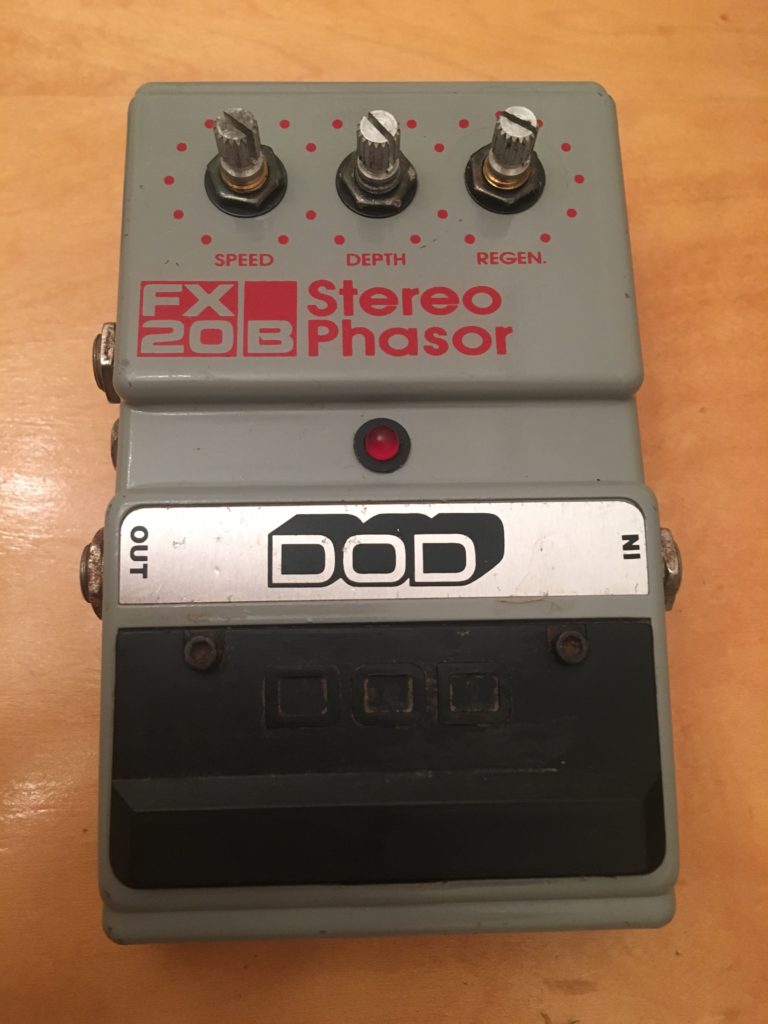
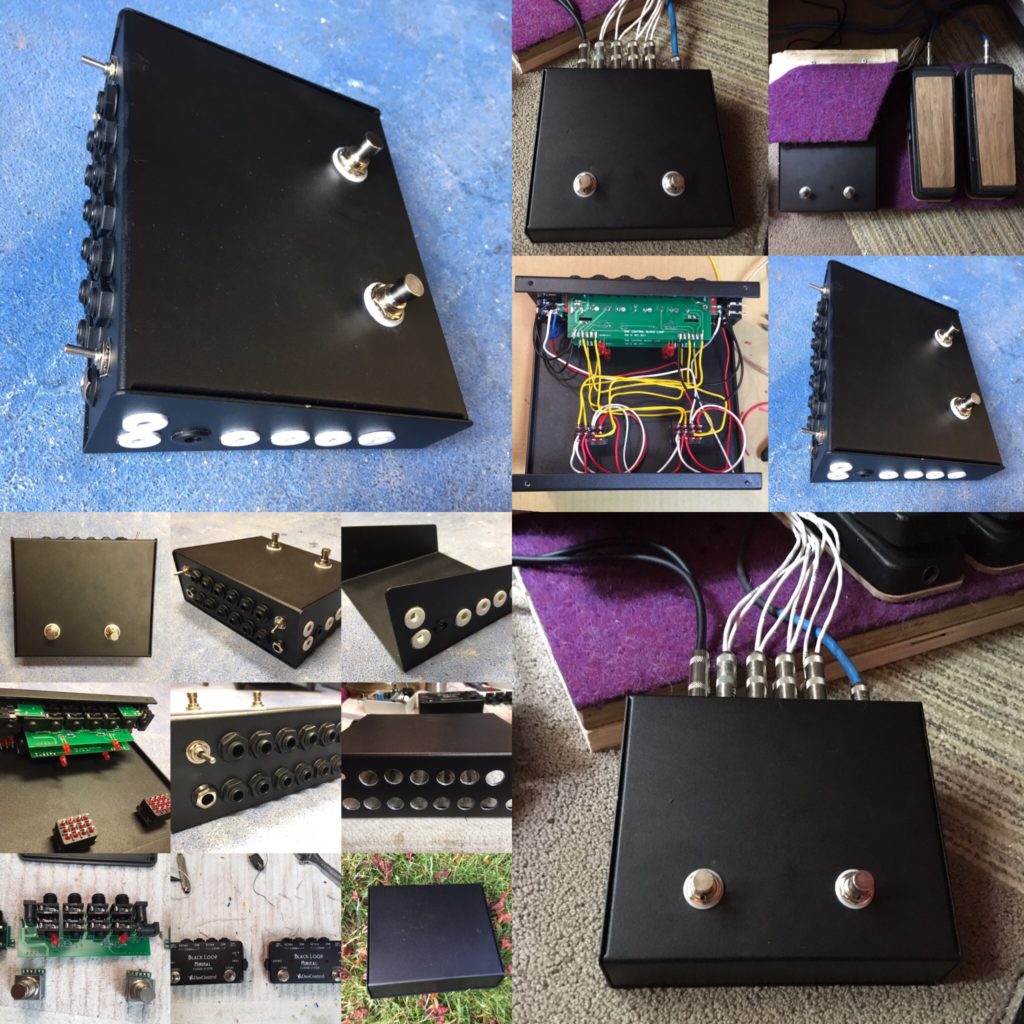
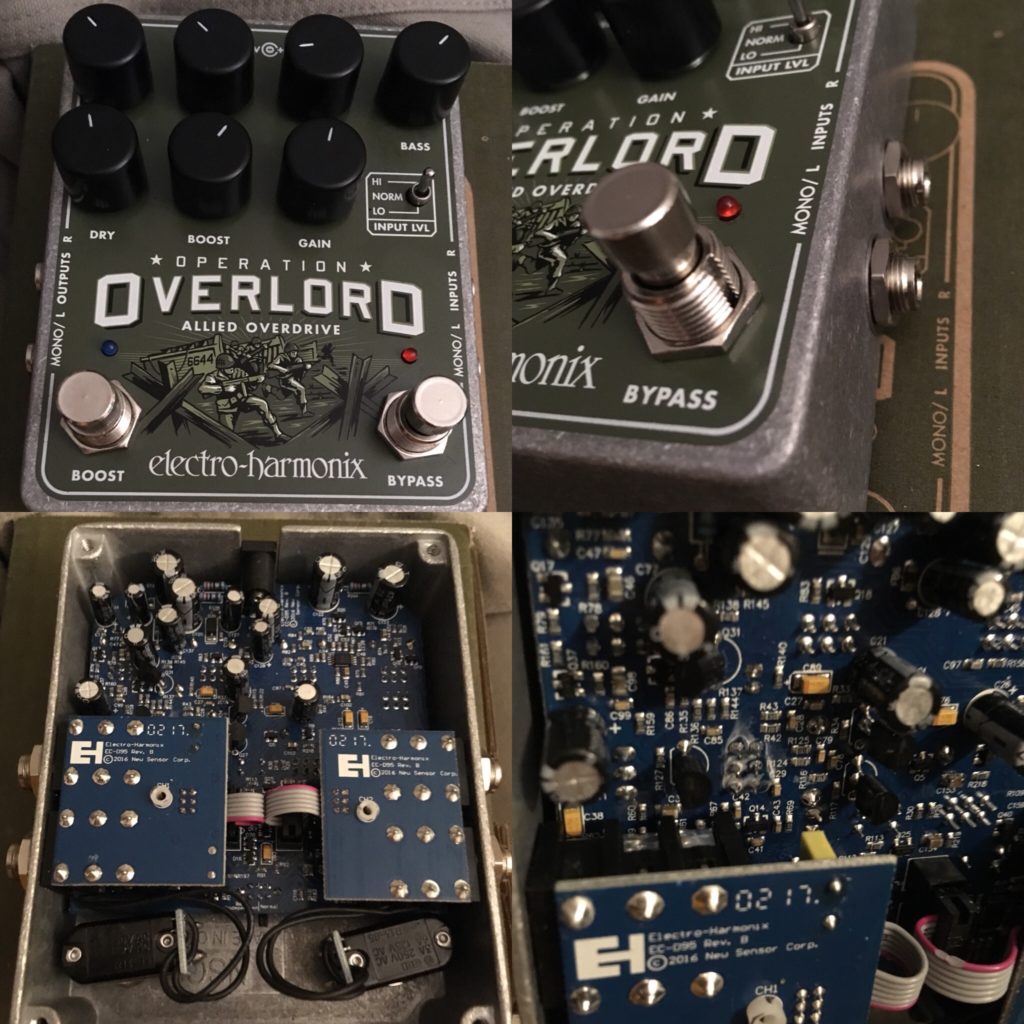
The first stop in Warble Town is a custom box that I prototyped and which Rare Buzzer Electronics helped me to produce the final build. The Stereo to Mono Looper allows for the blending between the original stereo input and up to three mono effect loops that sum the stereo signal to mono and the expand back into a dual-mono configuration. The three mono loops currently host a trio of effect boxes that primarily modulate the pitch of the (heavily) affected signal in different ways.
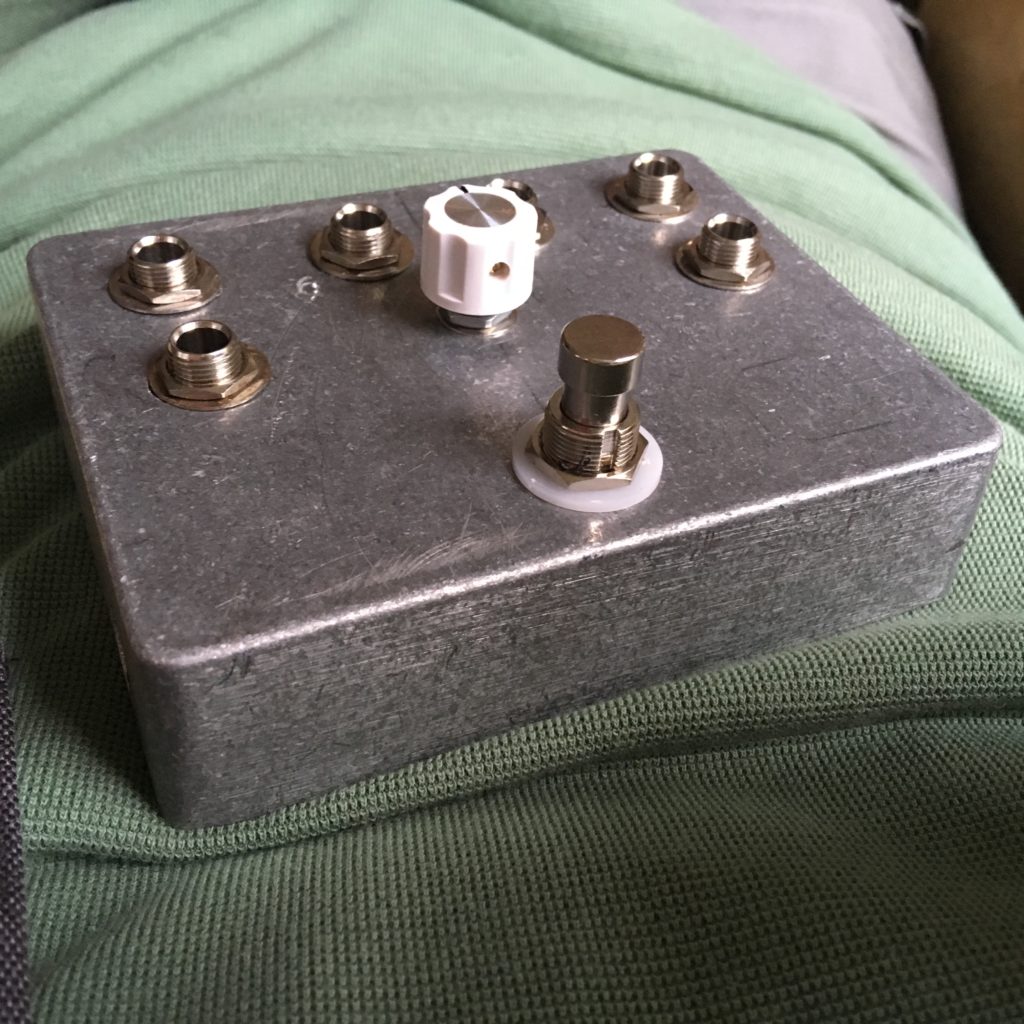
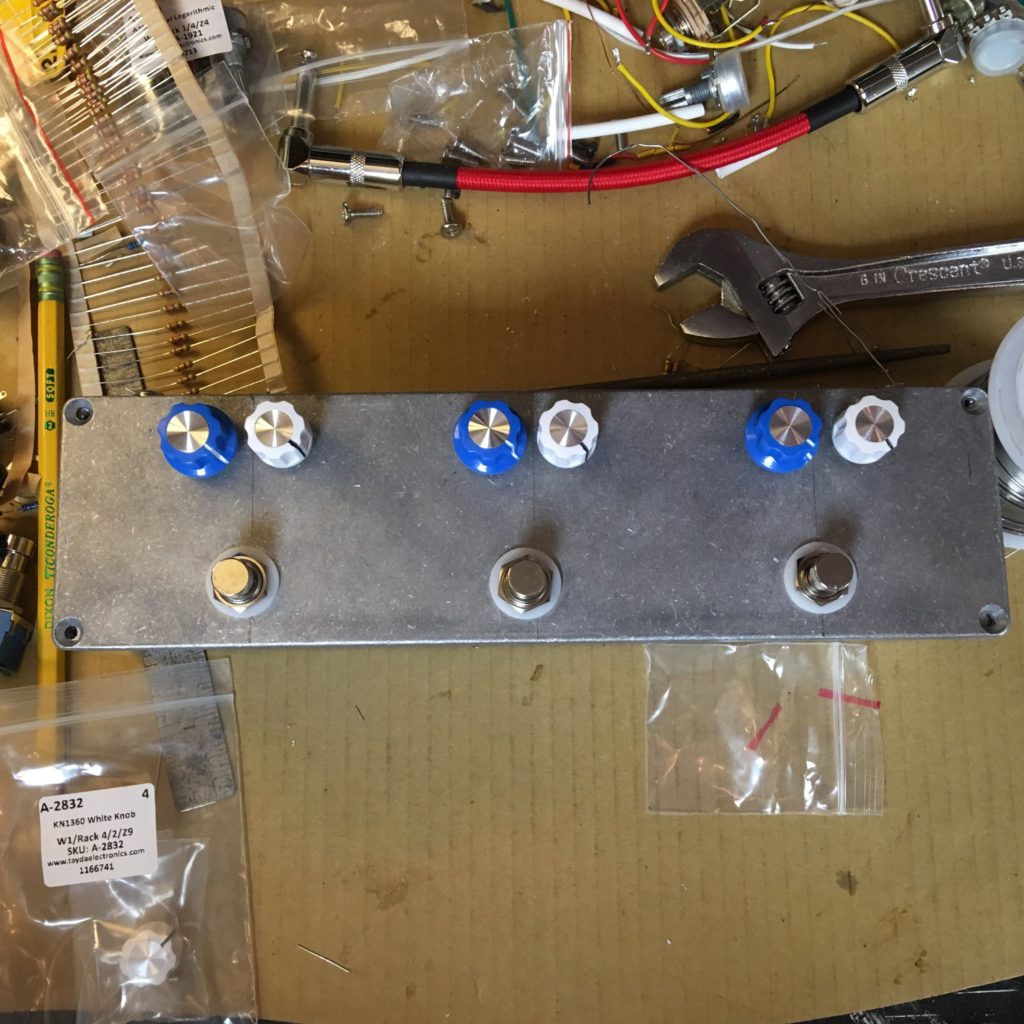
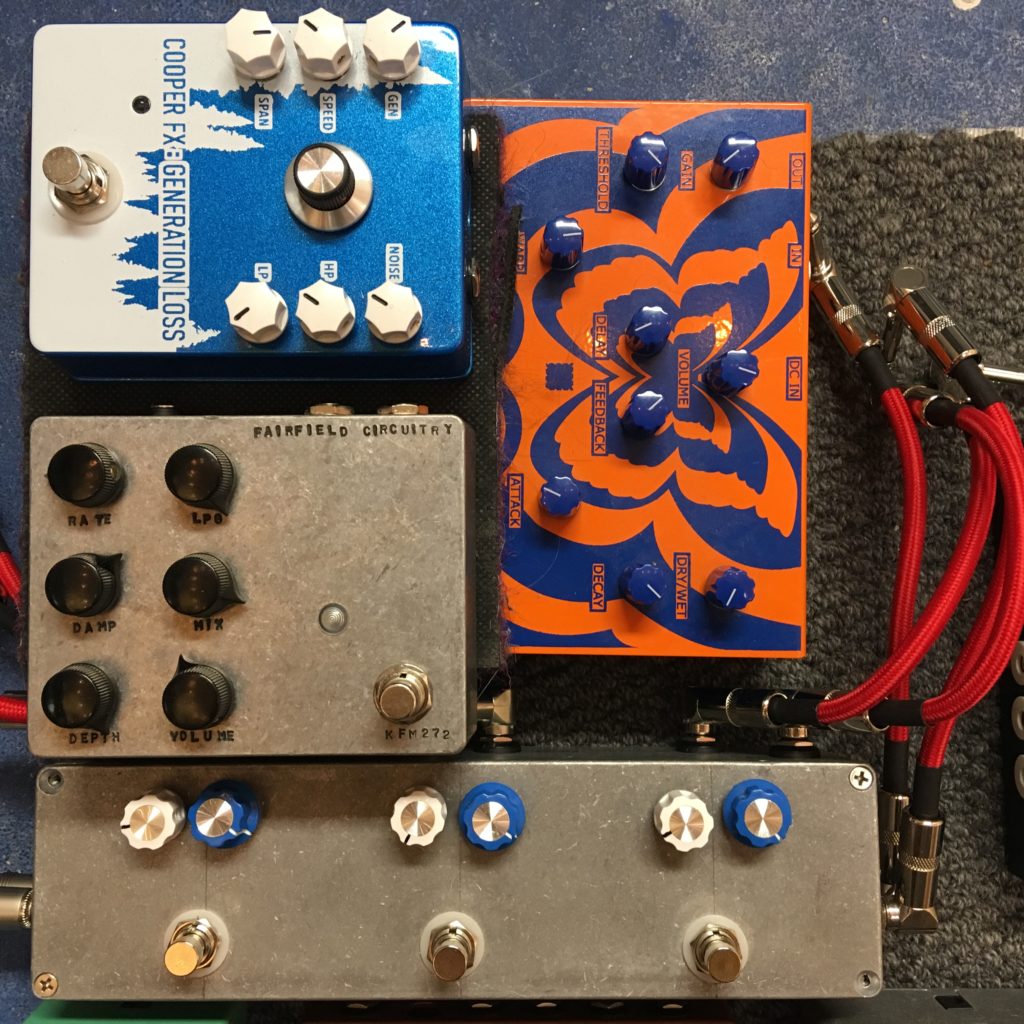
The train leaves the station from Warble Town and stops off at the SnazzyFX Wow and Flutter, which is meant to simulate the sound of a tape deck mechanically degrading the signal to various degrees of detuned and warbled randomness. The input stage comes with a threshold (similar to the Hologram Electronics Infinite Jets) and controls the engagement of the effect, allowing for amplitude-based application of warble and detune that responds to the input signal. Think of it like a My Bloody Valentine whammy-bar applied to a cloud of shattered noise fragments that bends when the waves of sound crest on the horizon and you’re close to the chaos that reigns when engaged. Next is the Cooper FX Generation Loss, another take on the broken tape-deck simulation that also brings a bit of randomness with it by-way of the “Span” control which controls the window of randomness set by the “Speed” control. This pedal puts things firmly into Boards of Canada territory with its warped-vinyl modulation and signal degradation options. Another effect that leverages randomness, and next up in the warble-chain, is the Fairfield Circuitry Shallow Water K-Field Modulator. The Shallow Water simulates a kind of “ripples on the pond” effect that presents itself as a randomized detuned modulated chorus within a set of parameters. These three effects (Wow and Flutter, Generation Loss, and Shallow Water) can be individually applied (or not) to the stereo signal and bypassed in total using a 4th footswitch on the Stereo to Mono Effects Looper. A super-bespoke routing configuration that allows me to apply some amount of these unique modulations to the billowing cloud of reverberation and delay in lie of the availability of discrete stereo effects that accomplish the same task.
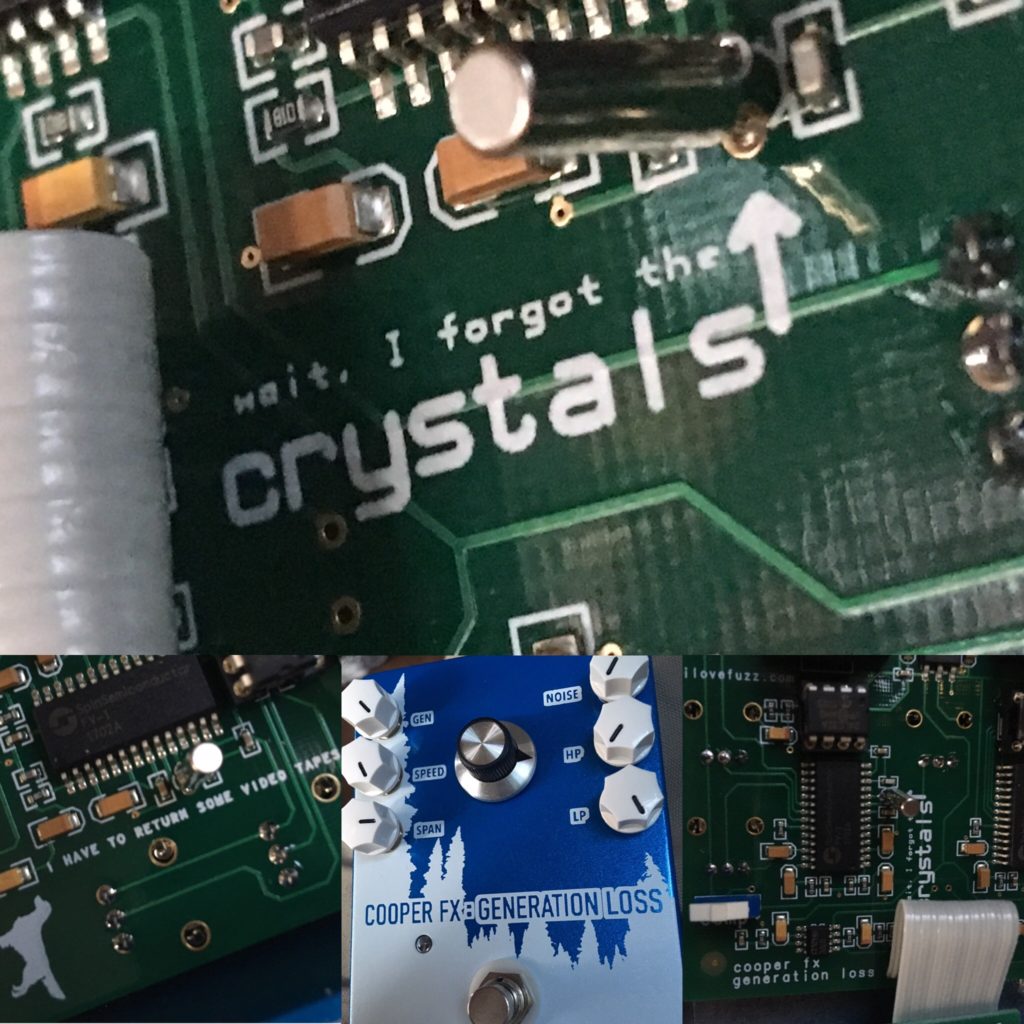
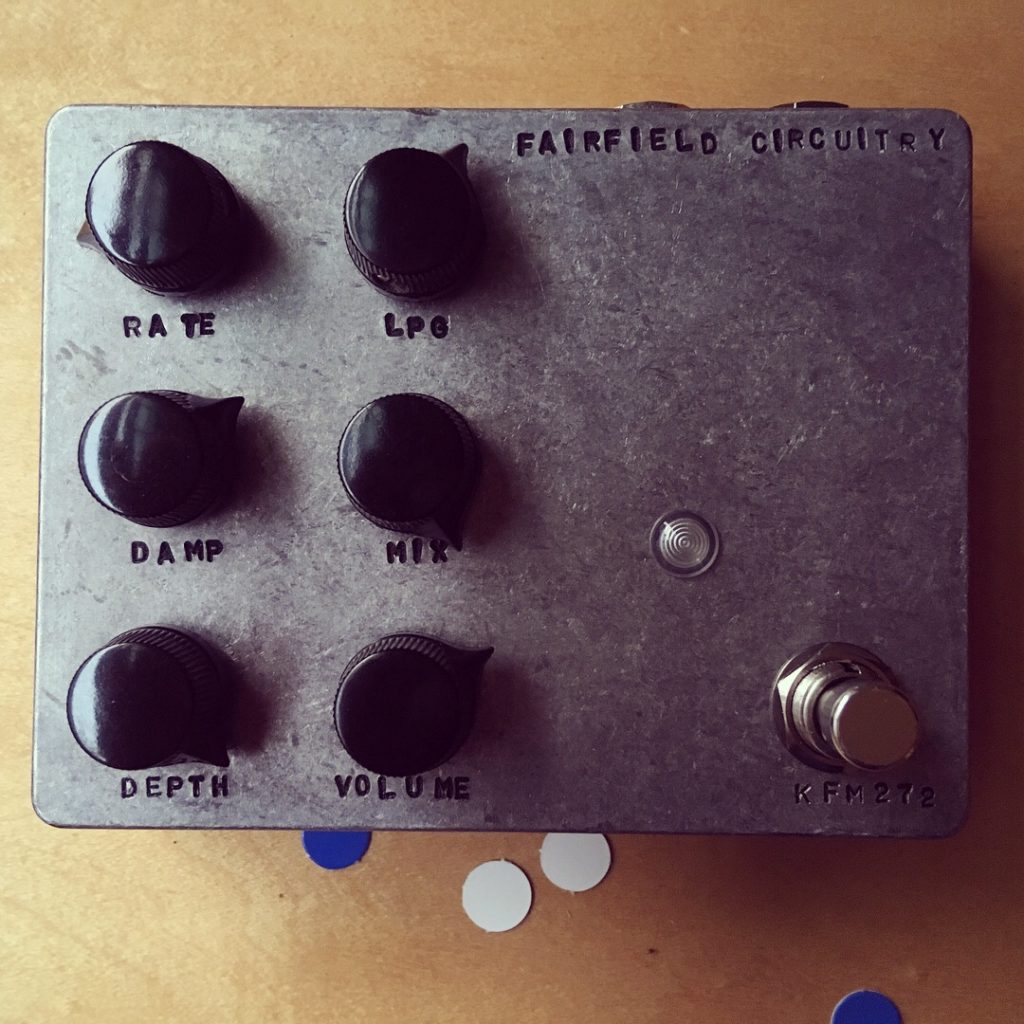
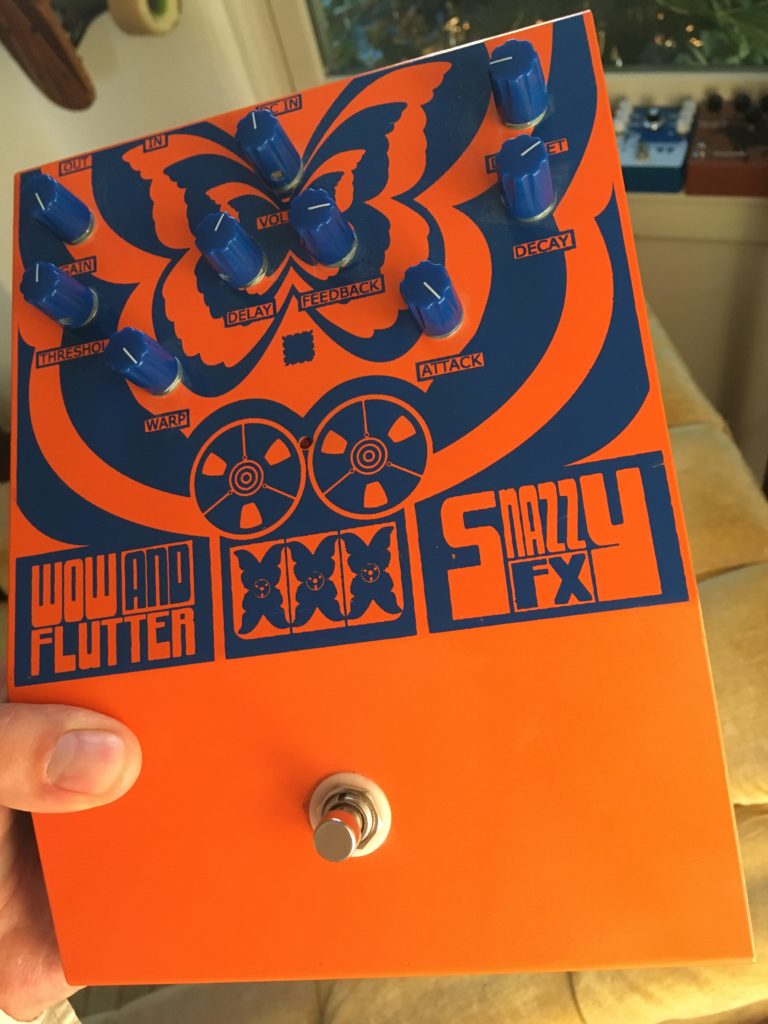
Heading out of the Stereo to Mono Looper, the signal routes into the Walrus Audio Vanguard Dual Phaser, which has 3 presets of dual-phase ability across 4, 6, or 10 stages plus special features. The Vanguard goes deep and swings between wild oscillations and shimmering, watery, beauty ala the hallowed Mu-tron Bi-Phase (which is seeing a Bi-Phase Reissue this year from Mu-Tron). With all that warble out of the way, there are just a couple more stops in the signal chain before hitting the input stage of the amplifier. The Boss PN-2 Stereo Tremolo/ Pan is a, now-discontinued, discrete input/ output panner and tremolo that can take each side of the stereo signal and bounce it between the two outputs. From slowly shifting triangle-wave pans across the stereo field to square-wave stuttering, the PN-2 brings movement and drama to passages in a way that few other pedals can. I tried substituting a Behringer TP300 Ultra Tremolo/ Pan when the one I bought as a teenager went dead recently, but pressed “Buy Now” on another PN-2 minutes after modding and playing with the Behringer; the triangle-wave setting is just sloppy sounding and not smooth at all in comparison.
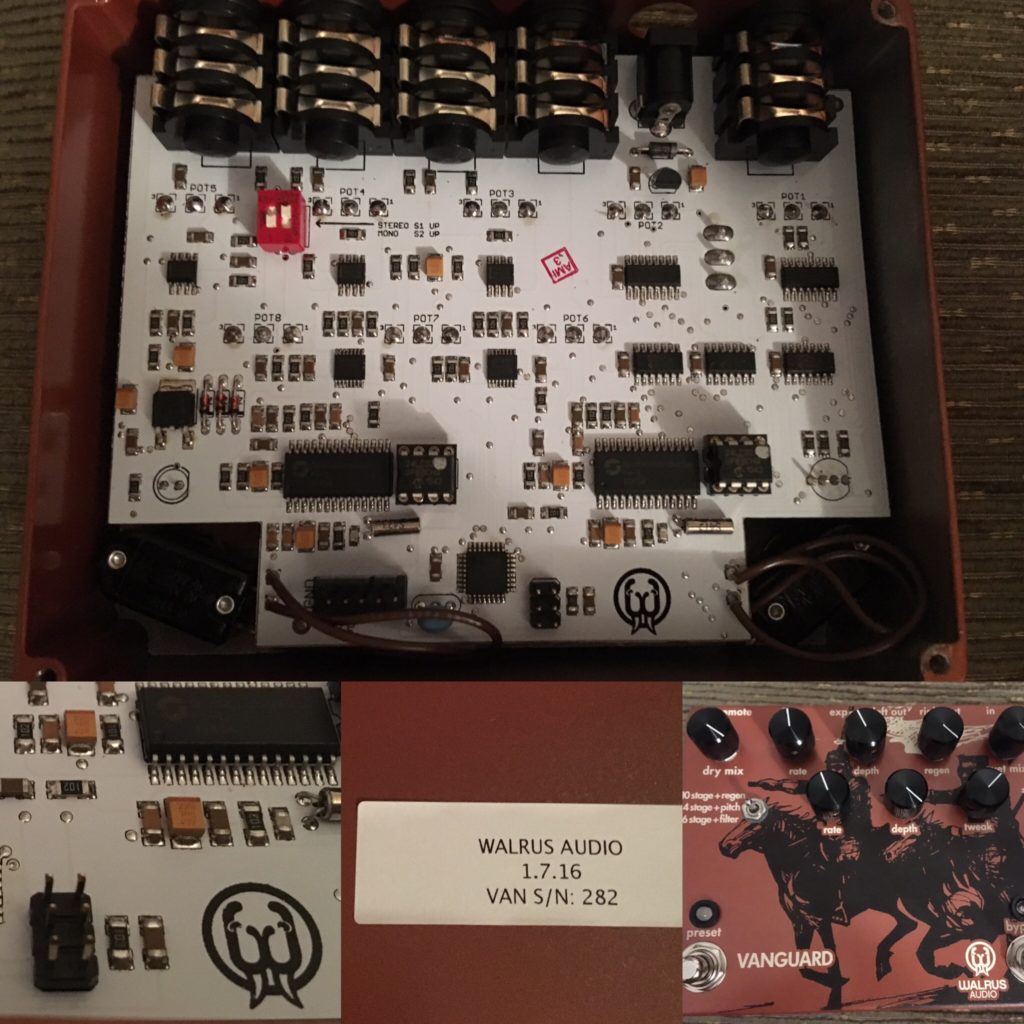
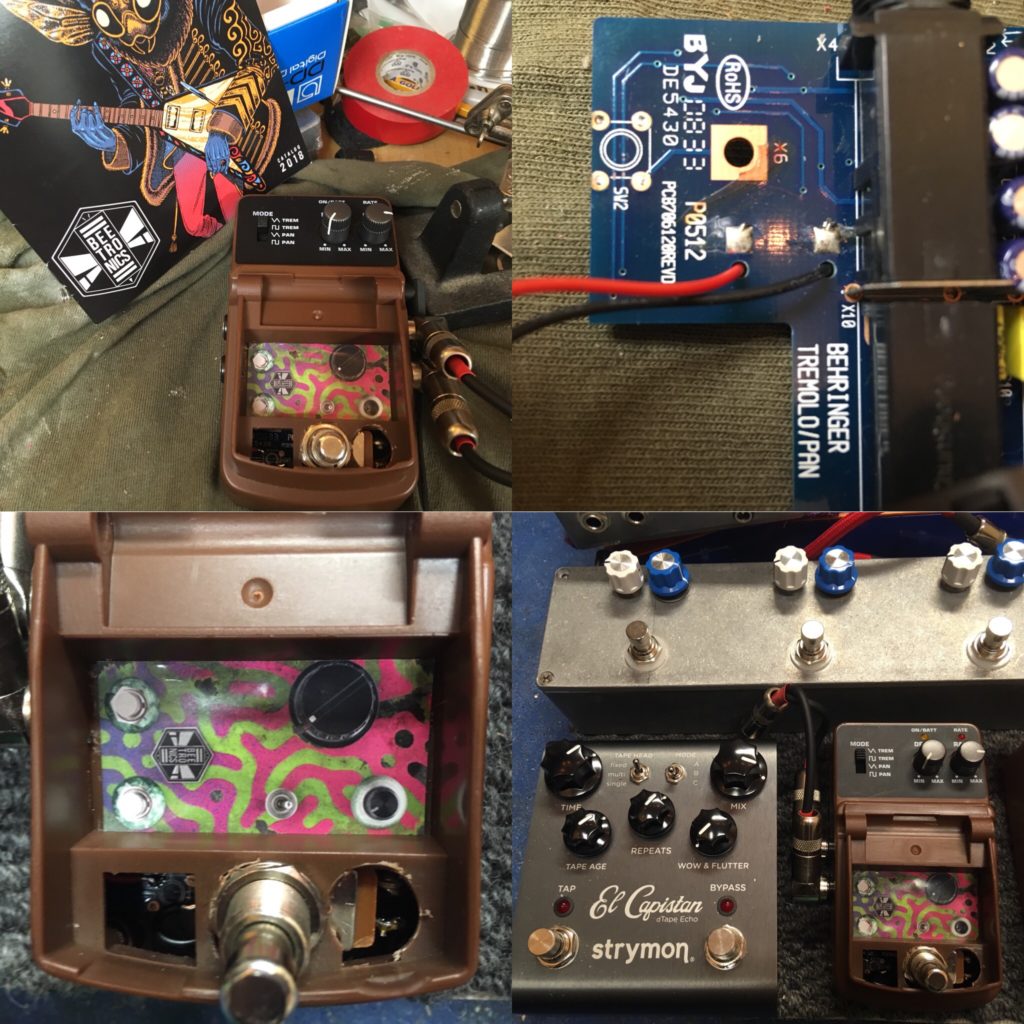
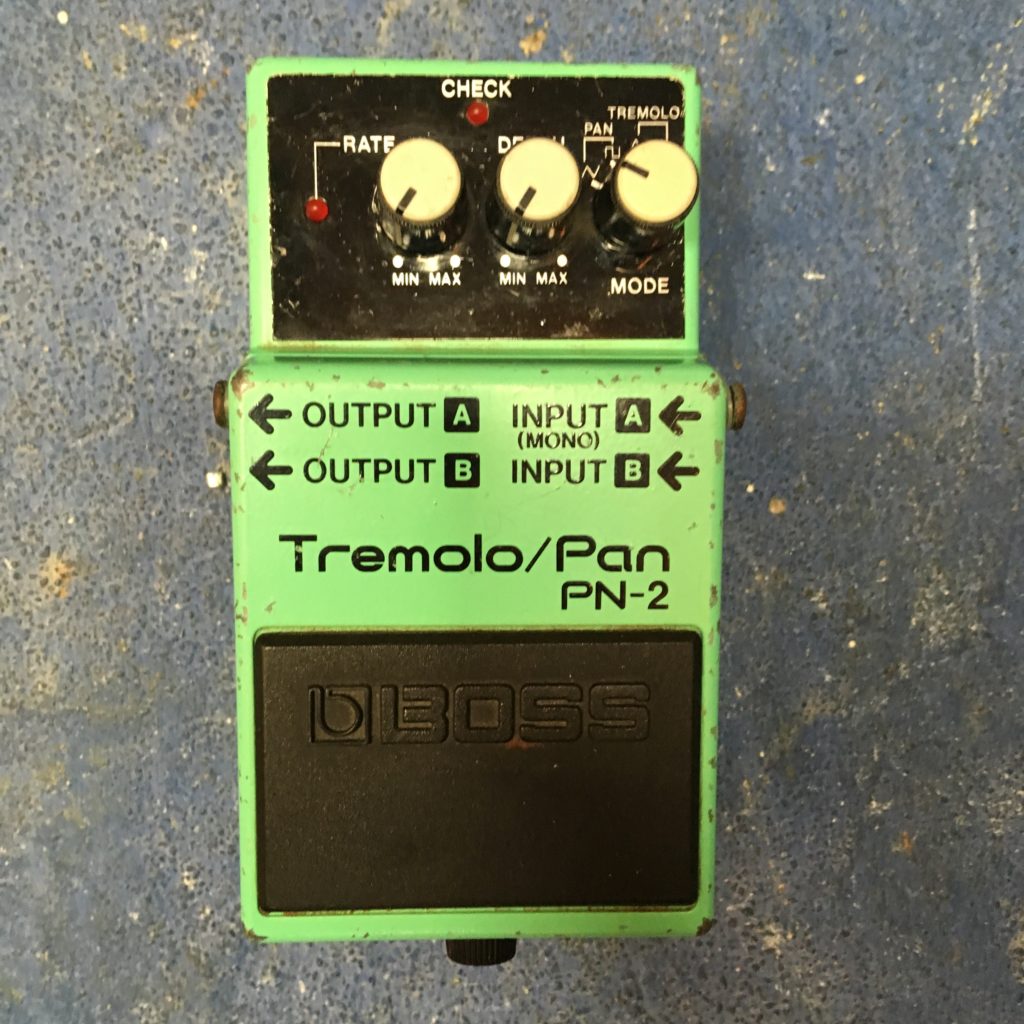
Before heading back out to the rack for compression courtesy of the Symetrix 525 mentioned in Part 2 of the article series, I wanted to add one more potential for delay. The Strymon El Capistan is the last stop on the stereo pedalboard and can fulfill any dreams of delay one might have, including pristine repeats all the way through to jammed-tape degradation and infinite oscillation. Add in a musical quality to the modification of the “Rate” control in realtime and the potential to shift the emanating cloud into other dimensions on-the-fly can be fully realized. One last critical piece of the puzzle is a ¼” junction-box which routes signal back and forth to the DSP 128+ and Symetrix rack units from the pedalboard to cut-down on plugging in and out of pedals and allows for a 8 channel snake that runs between the rack and pedalboard.
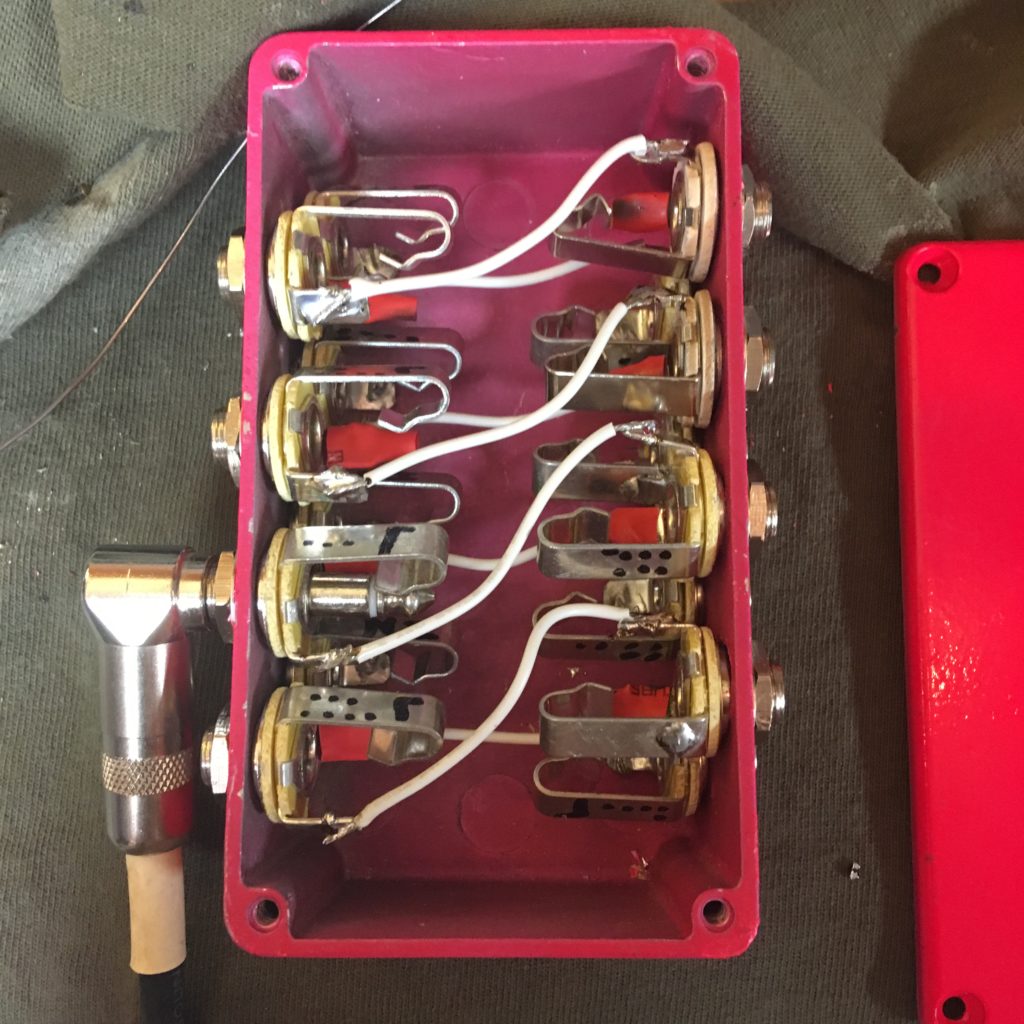
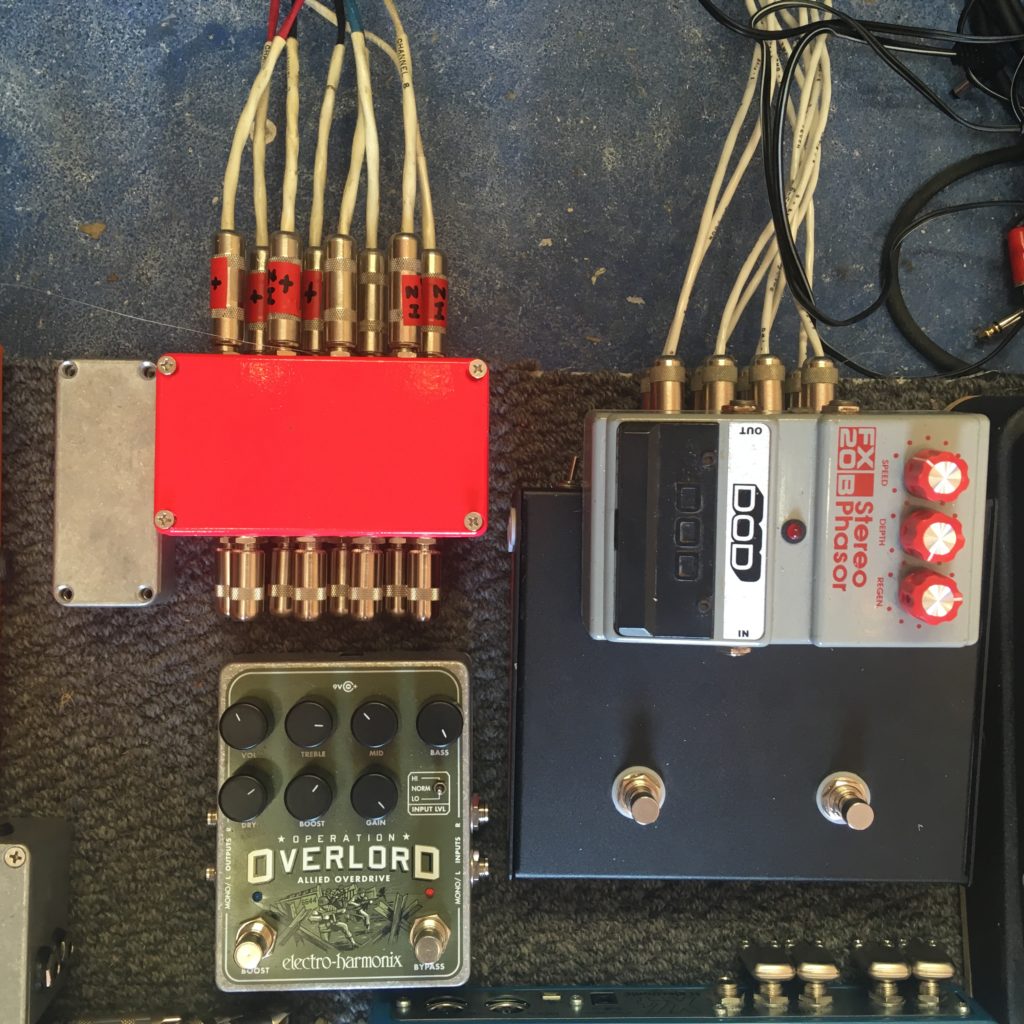
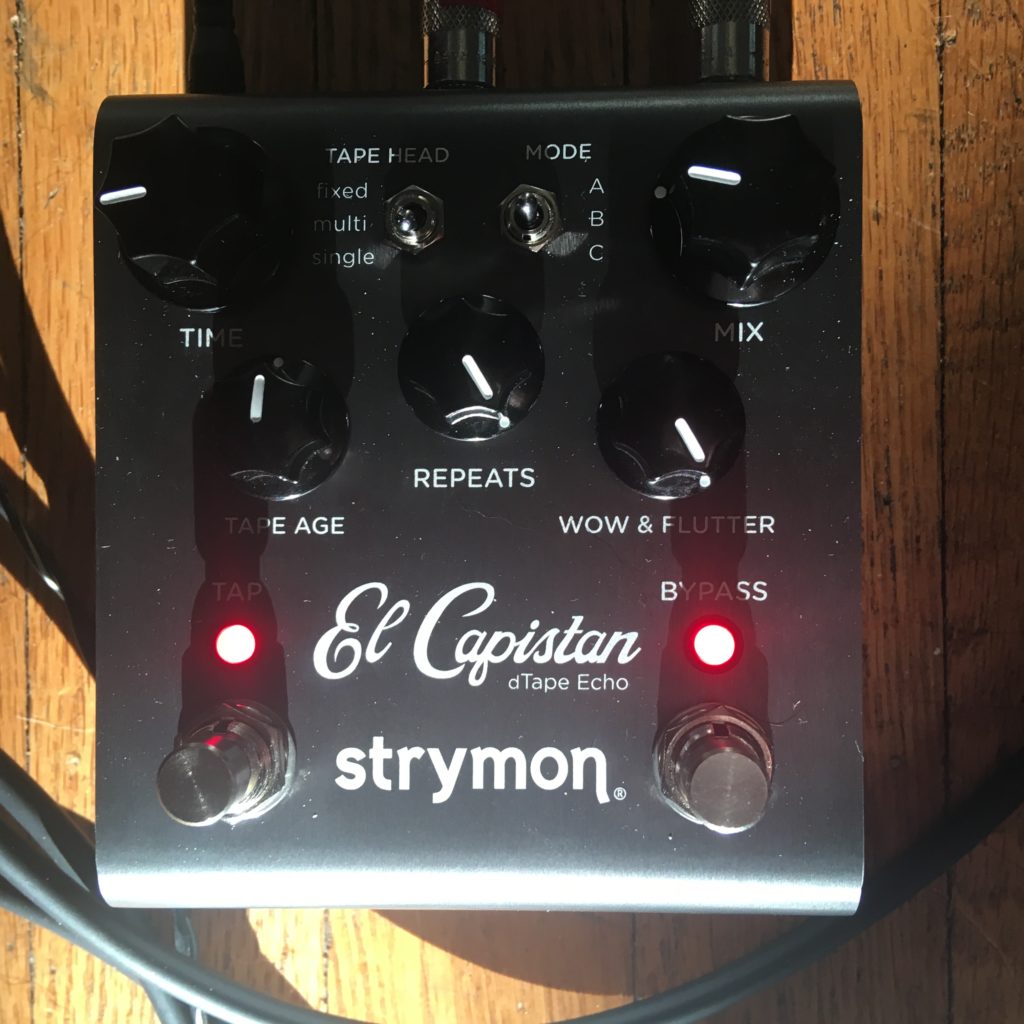
In building this system of sound modification, the goal is towards establishing a possibility space to act and react with the guitar fretboard manipulations; where the ebbing of sound might lead to the bending of notes, or the accidental melody requiring an additional boost of ethereal gauze on the next repeat, it’s all about potential in the moment of expression. Ultimately it is the divine interaction and improvisation that works in concert to channel the sound from within. From here you can loop back to the beginning of this series of articles and read more about the connection between game audio and pedalboards in Part 1, or jump into Part 2 which covers the system that was used to produce the album Lost Landscapes.
Part 1 – Opening a Trans-Dimensional Portal Using Time-Based Effects
Part 2 – Lost Landscapes | Pedalboards & Processing
Lost Chocolate Lab plays Lost Landscapes in Seattle at The Chapel on September 14th 2018 at 8pm
This article was contributed by Lost Chocolate Lab.

